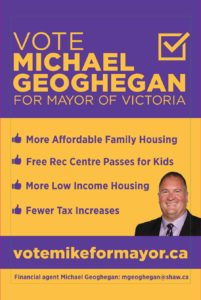News of island-wide impact
Deeper stories and local news: BC & NATIONAL | VANCOUVER ISLAND | LANGFORD | COLWOOD | VIEW ROYAL | METCHOSIN | SOOKE | JUAN de FUCA | EVENTS
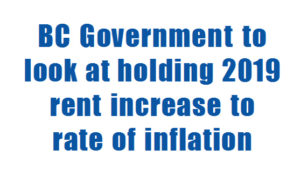 Monday, September 24 ~ BC. The BC Government has received a recommendation from its Rental Housing Task Force to ease pressure on renters while still recognizing the cost factors for rental property owners. [View this article on its own page]
Monday, September 24 ~ BC. The BC Government has received a recommendation from its Rental Housing Task Force to ease pressure on renters while still recognizing the cost factors for rental property owners. [View this article on its own page]
At present, under legislation passed in 2004, the rental increase for 2019 would be 4.5%. That would be fast on the heels of the 4% increase for 2018 that impacted renters this year.
Recommendations to government include:
- changing the maximum rent increase formula, from the current formula of inflation plus 2%, to inflation only (2.5% for 2019), which would remove the automatic 2% yearly increase.
- giving landlords the ability to apply for an additional increase if they can show the formula would not cover maintenance and other costs incurred.
This will be addressed by government in the legislature after the Legislative Assembly reconvenes October 1.
“Our recommendations follow the approach of Ontario and Manitoba and will keep rent more affordable while ensuring rental homes are maintained and improved,” said task force chair Chandra Herbert.
The recommendations and policy direction are supported by the BC Greens. “Today’s announcement is a strong step in addressing both current and ongoing rental affordability,” said BC Green Leader Andrew Weaver in a statement today.
“The rental task force represents the best of minority government. We have two different parties that have come together on an issue of shared interest and have developed solutions for government to consider,” said Weaver.
“This is exactly the type of collaboration that we need more of in our political system,” Weaver said, as the referendum on changing the electoral system to proportional representation looms October 22 to November 30.
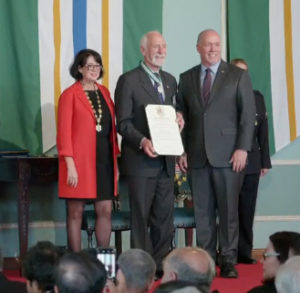
Thursday, September 20 ~ VICTORIA. The 2018 Order of British Columbia investiture ceremony was live online today, for the full community to share in the event.
Among the recipients of awards for 2018 are two west shore leading contributors.
David Anderson of Victoria, a federal and provincial politician who has worked to safeguard coastal waters and wetland areas from environmental pollution in his capacity as an elected official and in many roles on special committees and panels.
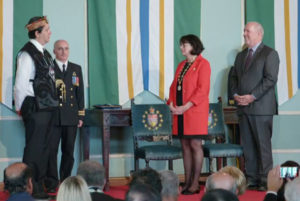
Carey Newman of Sooke is an Indigenous artist, master carver, singer, volunteer and well-known speaker about the spirit of reconciliation. He created the Witness Blanket, a powerful monument to the impact of the residential school era and the healing journey of First Nations.
The 13 recipients participating in the event today were a combined group of people who could not attend last year to receive their award, together with those of the 2018 recipients who could attend.
• Biographies of recipients
• Order of British Columbia background
OBC recipients are selected by an independent advisory committee. Members of the 2018 advisory committee:
• Robert J. Bauman (chair), Chief Justice of British Columbia
• Darryl Plecas, speaker of the legislative assembly
• Alan Davis, president and vice-chancellor, Kwantlen Polytechnic University
• Okenge Yuma Morisho, deputy minister, Intergovernmental Relations Secretariat
• Wendy Booth, president, Union of British Columbia Municipalities
• Rosamund Harrison, Order of British Columbia (OBC)
• Wendy Morton, MSM, OBC
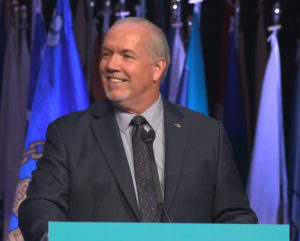
Friday, September 14 ~ VICTORIA. Today Premier John Horgan pitched for proportional representation in his speech at the Union of BC Municipalities convention in Whistler.
Horgan said that over his years in politics (first elected in 2005) he now supports a system in which the benefits of each person’s vote counts to produce a legislature of MLAs who represent what people in the constituency want and need done.
The Premier boasted the success of his present minority government with the BC Greens, an arrangement he says is based on the success of collaboration.
Tomorrow Saturday September 15, Green Party Leader Andrew Weaver and the BC Green Party will be holding a rally about proportional representation at 2pm, at the Victoria Conference Centre, 720 Douglas St.

For small communities under 5,000 the funding will be 100%.
Both these announcements in a speech by Minister of Municipal Affairs and Housing Minister Selina Robinson today at the Union of BC Municipalities (UBCM) convention in Whistler drew genuinely enthusiastic applause.
This will support communities in various ways, including providing jobs and building local economies. The outcomes will be improvements for overall community activity and well-being. In turn this creates strong communities on all levels.
And on the matter of housing, Minister Robinson said: “There is no time to waste. We need to make sure we’re doing everything we can at every level of govt to deliver more affordable housing.”
She announced that another 2,500 modular homes (with support systems for occupants) will be made available to municipalities that can provide land for these projects.
 Saturday, September 8 ~ VANCOUVER ISLAND. Premier John Horgan was in Sooke to help officially open the 2018 Sooke Fall Fair at noon, then travelled to Port Renfrew to take part in a special forests announcement for the Cowichan and Port Renfrew regions.
Saturday, September 8 ~ VANCOUVER ISLAND. Premier John Horgan was in Sooke to help officially open the 2018 Sooke Fall Fair at noon, then travelled to Port Renfrew to take part in a special forests announcement for the Cowichan and Port Renfrew regions.
People in the Cowichan Lake communities and Pacheedaht First Nation will benefit from a unique community forest agreement for the Qala:yit [Kwah-LIE-it] Community Forest, reached in partnership with the provincial government.
“This is the latest stride that our nation has taken towards creating our own economic destiny, including a new sawmill and a new potable community water system that is capable of serving the entire Port Renfrew area,” said Chief Jeff Jones, Pacheedaht First Nation.
“In partnership with the Cowichan Lake Community Forest Co-operative, BC Timber Sales and the Province, we are achieving our goal of greater resource management in our traditional territory.”
The agreement with BC Timber Sales is the first of its kind. One of the unique conditions of this community forest is that part of the land base includes BC Timber Sales’ operating area and, as a result, 7,296 cubic metres will be sold by BC Timber Sales. Of the net revenue generated from the BC Timber Sales harvest, 50% will be shared with the Qala:yit partners to use in their communities.
“The Qala:yit Community Forest partnership is the first of its kind and a great example of what we can accomplish when we work together to create good jobs and more opportunities so people can build better lives in their communities,” said Premier John Horgan.
As part of the application, the partners demonstrated community awareness and support for the community forest, including building relationships and sharing information with neighbouring First Nations and area communities. The applicants also submitted a management plan for approval that helped determine the final allowable annual cut, set at 31,498 cubic metres over approximately 8,000 hectares of Crown land.
“With such a tight land base in the area, the Qala:yit Community Forest would not have been possible without entering into this agreement with BC Timber Sales,” said Doug Donaldson, Minister of Forests, Lands, Natural Resource Operations and Rural Development.
“Because of the willingness of all parties to embrace ingenuity, the Pacheedaht First Nation and Cowichan Lake communities are now poised to reap the financial and social rewards, and increased input into local resource management decisions that go along with community forest agreements,” said Donaldson.
Community forest agreements are long-term, area-based tenures designed to encourage community involvement in the management of local forests. A community forest is managed by a local government, community group or First Nation for the benefit of the entire community.
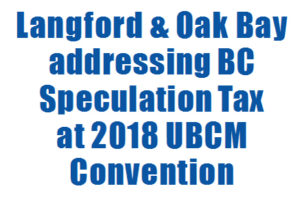 Friday, September 7 ~ WEST SHORE. The annual Union of BC Municipalities Convention is coming up Sept 10 to 14, this 115th year being held in Whistler, BC. Three municipalities from the Vancouver Island west shore area (Langford, Colwood and Sooke) are sending most of their councils.
Friday, September 7 ~ WEST SHORE. The annual Union of BC Municipalities Convention is coming up Sept 10 to 14, this 115th year being held in Whistler, BC. Three municipalities from the Vancouver Island west shore area (Langford, Colwood and Sooke) are sending most of their councils.
Langford Mayor Stew Young will be spearheading his council’s motion to allow municipalities to opt out of the BC Speculation Tax. Attending from Langford will be Councillors Denise Blackwell, Matt Sahlstrom, Lanny Seaton, Lillian Szpak, and Roger Wade. As part of the Langford motion, the City of Langford is suggesting that the BC Government put any funds received from a speculation tax on housing towards an affordable housing fund. On the island, the BC Government has already removed Parksville, the Gulf Islands, and Juan de Fuca Electoral Area from the tax.
Meanwhile, Oak Bay will propose that UBCM urge the Province to modify the approach in the current proposed Speculation
Tax to empower local governments to collect a levy on vacant residential properties and to require local governments that choose to impose such a levy to invest the revenues in non-market housing.
A 3-hour information session on Monday will explore ‘Achieving Affordability: Current Policy & Future Needs’. The session will look at creating the conditions for housing affordability that will require “ongoing, concerted actions to address a crisis that has built up over the past 30 years”…. “what are the implications of current government initiatives for local governments, and what further actions may be required?”
Colwood Mayor Carol Hamilton will be attending along with Councillors Rob Martin (who is running for Mayor in the current municipal election), Cynthia Day, Gordie Logan, and Terry Trace. Colwood has not brought forward any motions this year.
Sooke Mayor Maja Tait will be attending the UBCM convention along with Councilors Rick Kasper, Ebony Logins, and Kevin Pearson (who is running for Mayor in the current municipal election). Tait is a member of the UBCM executive, and is running again for mayor. Sooke has put forward a motion that would call on the Province to enact legislation that would protect wild salmon stock from the negative impacts of commercial salmon farms.
The District of Metchosin is being represented by Metchosin Mayor John Ranns along with Councillors Bob Graminga and Andy MacKinnon.
Cannabis tax revenue sharing and loss of the Greyhound bus service in western Canada are motions being brought forward by the UBCM executive. The LMLGA executive is bringing forward a motion on Employer Health Tax Impact on Local Governments.
The ‘Underfunding of Public Libraries’ motion being brought forward by Burns Lake looks at rural vs urban library systems and calls for the BC Government to ensure that funding formulas do not allow urbanization to threaten Public Library Association sustainability. Greater Victoria Public Library (GVPL) board chair Rob Martin says GVPL is not in favour of that motion.
The City of Victoria is bringing forward a motion about protecting coastal communities and waterways from oil spills. As well, Victoria — which now restricts the use of plastic bags by retailers — will be calling for the provincial government to work with local governments and retailers to introduce uniform, province-wide business regulations in relation to disposable plastic packaging, to substantially reduce the volume of disposable plastic packaging in local solid waste streams.
Travel costs for these trips to UBCM conventions are approved in municipal budgets. In 2019 the convention will be back in Vancouver (where it was in 2017) and in 2020 will be held in Victoria (where it was last held in 2016).
On Wednesday the convention will hear a speech by BC Green Leader Andrew Weaver, from BC Liberal Leader Andrew Wilkinson on Thursday, and from BC Premier John Horgan on Friday.
 Thursday, September 6 ~ GREATER VICTORIA. Free public Wi-Fi is now available to patients and visitors at Victoria General Hospital (VGH) and the Royal Jubilee Hospital (RJH) thanks to financial support from local hospital auxiliaries.
Thursday, September 6 ~ GREATER VICTORIA. Free public Wi-Fi is now available to patients and visitors at Victoria General Hospital (VGH) and the Royal Jubilee Hospital (RJH) thanks to financial support from local hospital auxiliaries.
In April 2018, Lake Cowichan resident Sarah Gibson started a petition asking Island Health to introduce free public Wi-Fi for patients. Gibson, who lives with Cystic Fibrosis, found the financial burden of using her data plan while she’s in the hospital to stay connected with family, friends and her CF support group was an added stress.
“I would like to thank Sarah for creating awareness on the benefits of publicly-accessible Wi-Fi at hospitals,” says Health Minister Adrian Dix. “Her efforts led us to develop a creative solution to provide free Wi-Fi at Victoria General Hospital. There are many critically important demands in our health-care system; however, when we engage our auxiliaries and foundations we can deliver on patient-centric amenities like Wi-Fi that enhance medical services and programs and help patients stay more connected.”
Says Island Health patient Sarah Gibson: “I know from experience, that having those connections outside the hospital can really help in healing and recovery.”
Patients and visitors can access the new service by searching for and connecting to the wireless network “IslandHealthGuest”. Free public Wi-Fi will support basic internet browsing, but not the large bandwidths associated with high-definition video streaming. The service has commenced today September 6, 2018.
Friday, August 31 ~ VANCOUVER ISLAND. The next Island Health board meeting will be held in Duncan, including public input.
Island Health’s Board of Directors will hold its next public forum in the Cowichan Valley. Directors will hear an update on the process to replace the Cowichan District Hospital and a public health presentation by Cowichan Valley Medical Health Officer Dr. Shannon Waters.
The meeting will be held Thursday, September 27 at 1:30 pm at Duncan Meadows at 6507 North Road, Duncan. Regular business includes committee updates and reports from President and CEO.
Island Health welcomes written questions from the public (individuals and organizations) in advance. A written request is required to make a presentation to the Board. Applications must be submitted approximately two weeks prior to the meeting date (which for this next meeting is September 13).
Submission of questions and presentation application forms can be obtained by calling 250-370-8693 or can be found at www.islandhealth.ca/about-us/accountability/organization/board-presentations-questions
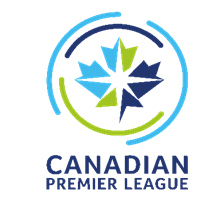 August 27 ~ NATIONAL. Today the Canadian Premier League announced that soccer players from coast to coast will have an opportunity to earn a spot on a professional club roster through the #GotGame Open Trials.
August 27 ~ NATIONAL. Today the Canadian Premier League announced that soccer players from coast to coast will have an opportunity to earn a spot on a professional club roster through the #GotGame Open Trials.
Canada’s new men’s professional soccer league will host the trials in seven cities across the country beginning in September. The trial on Vancouver Island (likely at Westhills Stadium in Langford) will be held November 5 to 6.
Registration is required in advance. Open to males age 16+. Interested participants can go to canpl.ca/gotgame. The registration fee is $200 per person.
On Day 1 of the tryouts each player will be evaluated through a series of fitness exercises and testing, soccer specific drills and assessments. At the end of Day 1, a limited number of players will be selected and invited back for Day 2, which will focus on small-sided and 11 vs. 11 soccer matches.
See full article about the trials and registration details here: https://islandsocialtrends.ca/?page_id=13137
See feature article on the announcement of Michael Silberbauer as the new Pacific FC coach, on page 1 in the August 24, 2018 issue of West Shore Voice News, or full version of article with more photos
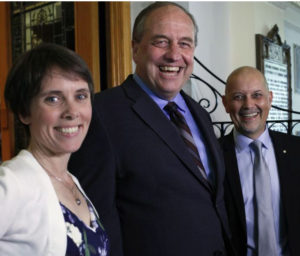
Andrew Weaver, Sonia Furstenau and Adam Olsen will host the community forum tonight at Alix Goolden Hall, 907 Pandora Avenue, in downtown Victoria, from 7 pm to 8:30 pm.
“The MLAs will hear concerns and questions from residents regarding the key issues in their communities, which will inform the BC Greens as they enter the Fall legislative session,” it was stated in a BC Greens release this morning.
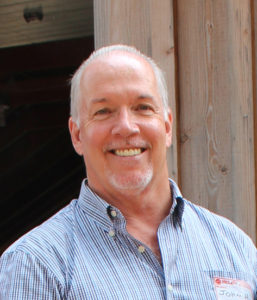
Horgan told the crowd that he’s pleased with the progress made by his government in the last 13 months. “I reached out to the Green Party and to the BC Liberals,” he said, noting that the current Speaker of the House is a BC Liberal MLA.
The BC NDP approach is about “working with their neighbours to get a better outcome for everybody”, Horgan told the crowd outdoors.
Horgan touched briefly on the upcoming referendum on proportional representation, saying that all governments but one in the last 40 years in BC have been given 100% of the power by a minority of the voter count. He suggested that the mail-in ballot process will be easy for everyone.
Wednesday, August 22 ~ WEST SHORE/MALAHAT. UPDATE 3:45 pm – Northbound traffic was opened at 3:30 pm and southbound at 4 pm. Expect congestion as backlog of traffic clears.
[Update 12:15 pm]. Hwy 1 (TransCanada) is closed in both directions 500 m north of Goldstream Provincial Park following a vehicle crash this morning. Assessment is underway. Northbound detour via Hwy14 (Sooke Road) to Pacific Marine Route to Hwy 18 and then back to TransCanada (Hwy 1); southbound detour via Hwy 18 to Pacific Marine Route to Hwy 14 and then back to TransCanada. So far, no specific time for highway re-opening.
[9:50 am]. A two-vehicle collision on the #Malahat at 8:10 am this morning August 22 involved a fatality. #Hwy1 is closed while Westshore RCMP crash analysts investigate the cause of the collision and #HAZMAT crews clean up a sewage spill. [Check back for updates]
The RCMP Traffic Unit, BC Ambulance and #Langford Fire Rescue responded. The collision occurred on Highway 1 in the southbound lane near the Goldstream Boat House.
The BC Ministry of Transportation & Infrastructure and the BC Ministry of Environment have personnel on site to assess hazards from the sewage that spilled from the overturned sewage truck involved in the incident. The driver of that vehicle was found deceased and the Coroner has been called to the scene.
The driver of the other vehicle involved in the crash — a blue SUV — was assessed for injuries by paramedics.
Highway 1 will remain closed at Goldstream Park in both directions while the investigation is completed. Reopening of Highway 1 will be significantly delayed. No detours so far.
As of 9:45 am, the City of Langford Engineering says the Malahat TransCanada Highway is closed both northbound and southbound, south of Shawnigan Lake Road and north of the West Shore Parkway. Finlayson Arm Road is not an available detour. Vehicles trying to use Finlayson Arm Road will be turned around. Motorists are asked to avoid the area.
Ministry of Transport and Ministry of Environment are assessing the hazards from the sewage spill. HAZMAT crews are expected complete the cleanup of the sewage prior to Highway 1 reopening, which will cause significant delays.
“The cause of the fatal collision is under investigation. The sewage spill prevents travel on the highway. We ask for patience from drivers who are affected by any delays as emergency crews deal with the closure of Highway 1,” says Cpl. Chris Dovell of the West Shore RCMP.
Wednesday, August 22 ~ WEST SHORE. We’re in for another day of extreme air quality risk today, Wednesday August 22. This means staying indoors when possible (with windows shut to keep out the polluted air) or heading to a community facility or shopping mall that is air conditioned.
Everyone is affected by these high levels of air contaminants, in particular seniors, very young children and those with heart and lung conditions or anyone with a chronic illness that challenges overall body function.

By tomorrow, the level is expected to drop to 5 which is Moderate, in both the West Shore and Victoria/Saanich.
The 10+ levels have resumed in the BC mainland interior area today. Details posted at www.bcairquality.ca
How to read the chart (from left): Current | Today | Tonight | Tomorrow
Tuesday, August 21 ~ GREATER VICTORIA. As of 6:04 pm this evening, Tuesday August 21, there is still a Very High Risk air quality statement for Greater Victoria (noted as Victoria/Saanich and WestShore recordings by Environment Canada).
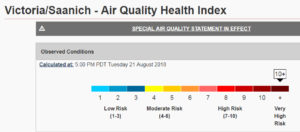
However, the BC Air Quality website says the level will be 10+ overnight, with a reduction still to only 8 (High) on Wednesday.
Today the interior had less smoky skies concerns, but on Wednesday theirs will apparently worsen again as the coastal areas clear up a bit.
For general information about wildfire smoke and your health, contact HealthLink BC at 8-1-1 (toll free, 24 hours a day, 7 days a week).
Stay inside if you have breathing difficulties. Find an indoor place that’s cool and ventilated. Using an air conditioner that cools and filters air may help. If you open the windows (or leave air exchangers in full operation) you may let in more polluted air. If your home isn’t air-conditioned, consider going to a public place (library, shopping mall, recreation centre) that is air-conditioned (cooler and filtered).
Friday, August 17 ~ BC. As of this afternoon, August 17, there are 556 fires burning throughout BC, with 55 of those being fires of note. [View this article on its own page]
“I’ve never seen that many at one time and over such an area,” said Kevin Skrepnek, Chief Fire Information Officer, BC Wildfire Service, today during a media conference. Just today, there are 14 new fires.
If a wildfire is especially visible or poses a threat to public safety, the BC Wildfire Service classifies it as a “Wildfire of Note” and provides detailed updates as information becomes available.
So far, the cost to the province for fighting wildfires is $242 million in this 2018 wildfire season, Skrepnek reported.
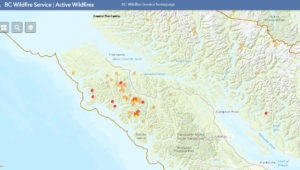
On northwest Vancouver Island, here are fires of note at Pinder Creek & Zeballos. Link to wildfires of note available on this page: https://www2.gov.bc.ca/gov/content/safety/wildfire-status/wildfire-situation
There is the potential for lightning in the southern part of the province, and the far northeast. “If we see lightning, it will be dry, which guarantees fires,” Skrepnek said. “Conditions are dry and warm. Smoke is going to be an ongoing concern for visibility. Forecast is bone dry. There is no rain on the horizon.” Conditions next week are forecast as relatively static. A ridge of high pressure is expected to break down after Wednesday next week (August 22), with the potential for showers but which bring more wind and lightning, the Chief Fire Information Officer explained. “With no major rain in sight, we’re bracing for the situation to continue for the weeks ahead.”
Other officials addressed media, including Doug Donaldson, Minister of Forests, Lands, Natural Resource Operations and Rural Development; and Jennifer Rice, Parliamentary Secretary for Emergency Preparedness, who were joined by representatives from the Canadian Armed Forces, BC Wildfire Service, Ministry of Health, Emergency Management BC and the RCMP.
There are presently 28 fires impacting 2,905 properties across BC, with 49 evacuation alerts affecting 11,300 properties province-wide. Across the affected areas of BC there are 13 Emergency Support Services (ESS) centres actively in place.
Provincial Health Officer Dr Bonnie Henry says wildfire smoke is “dynamic and changing rapidly… it comes and goes in space and time.” She is recommending that people do not evacuate for smoke alone. “It is extremely stressful to be evacuated from home and community. This can divert resources away from people who are threatened by the wildfires themselves.”
“If you have asthma or cardiopulmonary disease or are pregnant, you should reduce your exposure in any way,” says Dr Henry. “Stay indoors, and use a portable air cleaner to create a ‘clean room’,” says Dr Henry. “Regular exercise is important, but when air is smoky move those activities indoors. If you’re outdoors for work or helping on fires – use appropriate protective equipment. Have your rescue medications available,” she said.
The RCMP reported that 200 officers and civilian support staff are assisting with wildfire efforts.
The Canadian Armed Forces presently have 200 soldiers in the Okanagan region with a camp near Merritt, to work alongside their BC Wildfire partners .. notably with mop-up tasks (attended to smaller hot spots and clearing debris) so that frontline BC wildfire expertise can focus on the front lines.

Thursday, August 16 ~ GREATER VICTORIA. The Air Quality Health Index by Environment Canada is down to 3 today (scale of 1 to 10), for the Greater Victoria area today August 16.
This is significantly lower than in previous days.
Generally speaking, this is considered sufficiently good air quality for normal outdoor activities for seniors, young children, and anyone with heart/lung and breathing challenges.
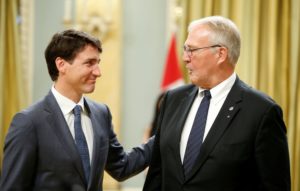
Wednesday, August 15 ~ BC. Prime Minister Justin Trudeau will hold a Cabinet retreat in Nanaimo from August 21 to 23. It will be the first meeting of the new Cabinet before Parliament resumes in September.
During the retreat, Trudeau and and ministers will “discuss ways to deliver economic growth and create good, middle class jobs for Canadians,” it was stated in a news release yesterday.
Discussions will focus on diversifying international trade, eliminating trade barriers between provinces and territories, and maintaining the integrity and security of Canada’s borders.
Since launching the historic Oceans Protection Plan in 2016, the Government says it has played a leading role to protect Canada’s oceans and coasts, and support coastal communities such as Nanaimo.
“I look forward to meeting with our new Cabinet in beautiful Nanaimo, British Columbia. Nanaimo is a gateway to Canada’s markets and a tourist destination known around the world. It is a perfect setting to discuss how we can promote Canadian exports, expand tourism, and diversify our trading partnerships, to continue making life better for people from Nanaimo to Corner Brook.”
Trudeau’s July 18 cabinet shuffle indicated a more intent focus on trade protection and diversification, border issues, resources and economy. See the July 20, 2018 issue of West Shore Voice News (page 1).
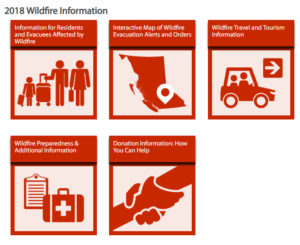 Wednesday, August 15 ~ BC. [Text of BC News release, August 15, 2018]. The British Columbia government has declared a provincial state of emergency to support the province-wide response to the ongoing wildfire situation. [Wildfire information at Emergency Info BC: https://www.emergencyinfobc.gov.bc.ca ]
Wednesday, August 15 ~ BC. [Text of BC News release, August 15, 2018]. The British Columbia government has declared a provincial state of emergency to support the province-wide response to the ongoing wildfire situation. [Wildfire information at Emergency Info BC: https://www.emergencyinfobc.gov.bc.ca ]
Mike Farnworth, Minister of Public Safety and Solicitor General, made the declaration based on the recommendation from BC’s wildfire and emergency management officials.
The state of emergency is initially in effect for 14 days, once issued, and may be extended or rescinded as necessary. The state of emergency applies to the whole province and ensures federal, provincial and local resources can be delivered in a coordinated response to protect the public, which remains the provincial government’s top priority.
“Public safety is always our first priority and, as wildfire activity is expected to increase, this is a progressive step in our wildfire response to make sure British Columbia has access to any and all resources necessary,” Farnworth said. “Taking this step will further ensure we can protect the public, property and infrastructure, and assist with firefighting efforts.”
As of August 14, there were 566 wildfires burning in BC, with 29 evacuation orders affecting approximately 3,050 people (1,521 properties), in addition to 48 evacuation alerts impacting approximately 18,720 people (9,359 properties).
The extended weather forecast calls for continued hot and dry conditions, with risk of thunderstorms in some parts of the province.
Currently, more than 3,372 firefighters and contractors are actively engaged in fighting fires in all fire regions of the province. This includes 1,427 BC contract personnel, as well as 436 out-of-province personnel from Alberta, New Brunswick, Northwest Territories, Quebec, Saskatchewan, Parks Canada, Australia, Mexico and New Zealand.
The federal government has responded to and accepted British Columbia’s request for assistance. In the coming days, federal personnel and resources will be arriving in BC to assist with wildfire efforts.
“Given the unpredictable behaviour of wildfires and the number of significant wildfires in all areas of the province, we’re bringing in the additional resources we need to keep people and communities as safe as possible,” said Doug Donaldson, Minister of Forests, Lands, Natural Resource Operations and Rural Development. “We’re asking British Columbians to do their part and follow burning bans and restrictions to prevent human-caused fires.”
The state of emergency gives agencies, such as the Ministry of Forests, Lands, Natural Resource Operations and Rural Development, Emergency Management BC, the fire commissioner and the RCMP, the authority to take every action necessary to fight the wildfires and protect people and communities.
Declarations of provincial states of emergency may be issued by the minister responsible under the Emergency Program Act. The provincial government can extend the period of a declaration made by the minister responsible, for further periods of time. During the 2017 wildfire season, the Province was in a provincial state of emergency for 10 weeks, from July 7 to September 15.
The last provincial declaration of state of emergency before the 2017 wildfire season was issued in August 2003, to deal with wildfires.

That’s listed as ‘moderate risk’ (at the top of the 4 to 6 range), though yesterday health officials were calling the smoke levels ‘high risk’. The forecast shows the Air Quality Health Index could reach 7 (7 to 10 is officially High Risk) in the next 18 hours.
Seniors, young children, and anyone with lung, heart or chronic health disorders can find breathing to be more difficult when the air quality is poor. Reducing strenuous activities outdoors is applicable to everyone under these conditions.
The smoky skies are a result of wildfires burning in north-central BC and on Vancouver Island. A ridge of high pressure is preventing the dispersal of the smoke from the south-island region.
The smoke may contain some degree of chemicals from the fire retardants used to battle the wildfires.
According to the BC Ministry of Forests, Lands, Natural Resource Operations and Rural Development, fire retardants, foam and water can all be used to slow down a fire’s growth. They support the efforts of ground crews in containing the fire. Water-soluble fire retardants are commonly used in fire suppression because of their long-lasting effect on fires. They contain ammonium salts which affect the burning process of forest fuels. The fire retardant liquid concentrate is mixed with water at a ratio of 5.5 parts water to one part concentrate to form the working solution. Retardant has a much longer-lasting effect than water in fire suppression because it does not evaporate. On average, about 9.4 million litres of fire retardant is used each fire season in BC.
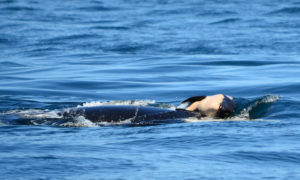
When I think of the 17 days of the ‘tour of grief’ exhibited by the endangered female orca known as J35, I can’t help but think this was done as a very public way of saying “look at what you’ve done you ignorant humans!”
Over-fishing, pollution, plastics, blasting, jet rumblings, ferries, freighters, cruise ships, underwater interference from submarines, military exercises, global warming, …do we need more proof like this to demonstrate that we are causing death and destruction to our natural world?
We’ve been blessed with a utopia of natural beauty, splendor and abundance. Solutions exist to ensure it survives, but it doesn’t appear we are learning and listening! I highly recommend viewing the animated video, #WakeUpCall, by the Gaia Foundation and being part of the solution by joining one of the many organizations listed at www.creativelyunited.org
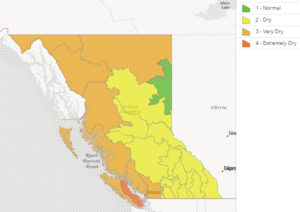
As a result, a maximum reduction of water use is recommended and regulatory action may become necessary.
The west side of Vancouver Island remains at Level 3 and will be re-evaluated as conditions deteriorate, the government says.
A map of the affected areas is available online: http://ow.ly/BY7z30lpdi0
The Province is urging all surface water and groundwater users, including residents, industry, farmers and municipalities, to voluntarily reduce water consumption.
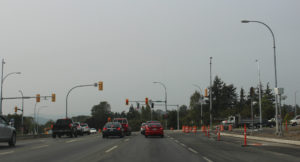
In Greater Victoria today, daytime road traffic was lighter than usual. Many people were indoors where possible, as even those without chronic health conditions can feel the impact of breathing air containing the smoke particles.
The air quality index is at High for large areas of the province. Seniors, young children, and anyone with lung, heart or chronic health disorders can find breathing to be more difficult when the air quality is poor. Reducing strenuous activities outdoors is applicable to everyone under these conditions.
A lack of wind in the forecast means the intense level of smoke is likely to continue for the next few days, according to Environment Canada. A light westerly wind is in the forecast for Thursday.
As of 6 am this morning, Victoria was at level 4 on the 1-10 air quality health index scale. By 9 pm the level had reached 6. The Island Health Smoky Skies Bulletin August 14 included ‘West Vancouver Island’ (Tofino, Uclulet, Port Renfrew, Sooke) and ‘Greater Victoria’ (includes Sidney, Victoria, Saanich, Langford, Metchosin).
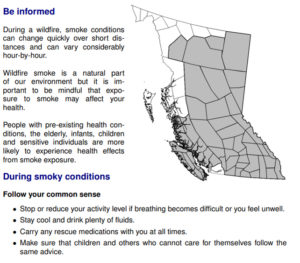
Island Health says to stay cool and drink plenty of water. Reduce indoor air pollution sources such as smoking, burning candles and frying foods. And to carry ‘rescue medications’. Also, to be sure that children and others with health needs are given the same level of care and attention regarding any impacts from the higher level of smoke.
The full Island Health Smoky Skies Bulletin of August 14 is here: https://www2.gov.bc.ca/assets/gov/environment/air-land-water/air/advisories/2018-08-14_smoky_skies_amended.pdf .
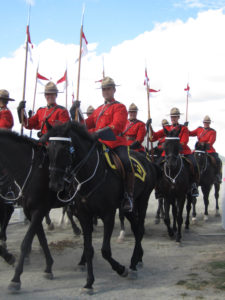
“This time around we wanted to do something special for Sooke,” says former Sooke RCMP Detachment Commander Steve Wright who is now retired, living in Sooke, and volunteering with the Sooke Lions Club.
About 20 people are helping organize the event, including members of the two Lions Clubs and Lioness Club in the area. The Sooke Community Association is participating with the event as it is occurring at Fred Milne Park. “As well we have involved people outside of our club as well for their expertise in specific areas,” says Wright.
The matinee on Saturday August 18 will start at 2 pm (gates open at noon). The sunset performance on Sunday August 19 sees the gates open at 4 pm for the 6 pm show, concluding close to the 8:20 pm sunset.
“The musical ride is a long-standing tradition in the RCMP and is well known around the world,” says Wright. “Members who are successful in getting on the ride travel around Canada and the world representing our iconic Force.”
RCMP officers participating in the formal equestrian showcase make an exclusive three-year commitment — no other policing duties. Transferring to Ottawa, members train for about a year, then travel for two more. Members apply and then must pass a one-month equestrian course.
Horses mainly travel in tractor trailer units. For overseas travel, they fly. Horses are trained from an early age to travel and the horses all take it in stride.
Special memories from Saanich in 2013: “We raised a lot of money for two children’s charities ($65,000). We had a lot of fun working with other Lions Clubs to put on an amazing two-day event that is affordable for families,” said Wright.
“It is very special for us to host a world class event in Sooke. We have tried to sell as many tickets as possible in Sooke prior to selling them elsewhere,” he said this week. Tickets are available in Sooke at Shoppers, Pharmasave and the RCMP Detachment; also at Willow Wind Feed in Langford and Esquimalt Dry Cleaners.
As a treat for local seniors, two RCMP Members and their horses will make a special visit to Ayre Manor in Sooke town centre where they will talk to the residents and display the horses to people who may not be able to attend the crowd-size performances.
The National Band of the Naval Reserve will perform both days as the pre-show entertainment. The band will also do a free concert in Sooke on Sunday August 12 at Ed Macgregor Park, 2 pm.
There are 2,200 tickets to be sold for each performance. Portable bleachers and some chairs will be the available seating; people will not be allowed to bring their own lawn chairs due to limited room. “We are not using the artificial turf. We will be using the lower field closest to Sooke Road,” says Wright.
Planning for this event started five years ago right after the Musical Ride in Saanich. “We applied to host the Musical Ride immediately following our last show. We started our planning sessions for the event in Sooke in January 2018 when we were awarded the Musical Ride, says Wright. Premier John Horgan along is planning to attend one of the performances.
Organizers suggest buying tickets ahead of time, not wait until the August 18 and 19 performance days. All tickets $5. There will be a food concession and RCMP Musical Ride merchandise for sale — cash only. All profits go to the Canadian Cancer Society / Cops for Cancer Tour de Rock.
More info: | Facebook: SookeMusicalRide | Twitter: @musicalride2018 | Email: sookemusicalride@hotmail.com
This article was first published in the August 3, 2018 Print/PDF issue of West Shore Voice News (page 4)
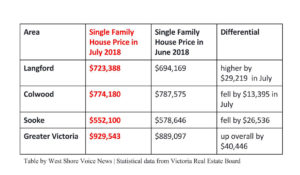
In the west shore, the average sale price of single family homes sold in Langford was $723,388 (48 sales) which is up by $29,219 from June. In Colwood the average was $774,180 (22 sales) which is down by $13,395 from June. In Sooke the average sale price was $552,100 (21 sales) which down by $26,536 from the June average sale.
For overall Greater Victoria the average sale was $929,543 in July 2018. Other than in February of this year, the average house price in GV this year has been above $900,000 (Jan $925,715, Feb $876,397, March $903,052, April $917,793 May $921,046).
Sales volume this year increased steadily from January (431) to May (755) then edged lower in June (708) and July (651). Summer is traditionally a slower sales period after the springtime burst usually seen March-May each year as homeowners with families try to set up summer move dates ahead of school starting in September or generally take advantage of good summer weather for moving.
Notably, the inventory of properties for sale has steady increased each month in 2018. From a lowpoint of 1,384 properties for sale at year-end 2017, inventory in January at 1,481 grew month by month to 2,607 in July 2018. The market supply is being replenished. This results from a few different factors: prices are high and going higher; the mortgage stress-test has eliminated easy fluidity for low-end sellers and first-time buyers; and the economy is some ways more uncertain (tariffs affecting some industries and the cost of living in general).
As well, uncertainty has resulted for the higher-end sector by their reaction to the looming BC Speculation Tax which has already chilled the interest of buyers in the higher end of the market. Those same factors that the current BC government hopes will free up more housing are in fact creating market uncertainty that is beginning to spook some development projects, which perhaps have minimized, slowed or even been cancelled. BC housing policy that ramps up construction of affordable housing projects is numerically achieving ‘roofs over heads’ for people at the low end of socioeconomic scale – a good thing. But for people looking to buy a regular home with regular income, the prospects are not likely to improve under current conditions.
Last month condos sold in Langford on average broke the $400,000 price point, selling at $407,343. In Colwood in July condos sold at a whopping $532,450 (more than $100,000 higher than the June average). Condo product is infrequently available in Sooke (no sales in June or July). Condos overall in Greater Victoria in July sold at $474,924 which is drop of over $10,000 from June.
In the townhome market in July, the overall average dropped by over $52,000 from June to July 2018, setting at $563,718 in July. In Langford the average was $486,473, in Colwood $671,880, and in Sooke $563,718.
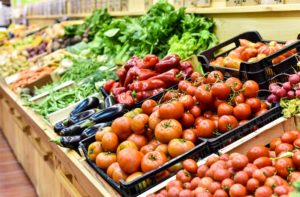 Tuesday, July 31 ~ BC. September deadline approaching for organic food and beverage certification.
Tuesday, July 31 ~ BC. September deadline approaching for organic food and beverage certification.
Producers are reminded that in one month, a new, strengthened regulatory approach for domestically marketed organic food and beverage products will be in place in British Columbia.
Beginning September 1, 2018 the BC government is regulating the term “organic.” This means food and beverage products marketed in British Columbia as “organic” will be required to be certified through an accredited federal or provincial program.
The modern system will provide consumers with confidence that the BC organic agriculture products they enjoy will be backed up with standards and requirements for the key words and phrases used to describe and market them.
Uncertified producers in the province marketing their food or beverage products as “organic” will face the possibility of penalties, including a $350 fine.
The new regulations were originally announced in 2016. Non-certified producers have been provided with a lengthy transition period to September 2018 to allow the time to complete the certification process.
Further information on BC’s organic food and beverages and amendments to the current provincial regulation: https://www2.gov.bc.ca/gov/content/industry/agriculture-seafood/animals-and-crops/organic-food-and-beverages
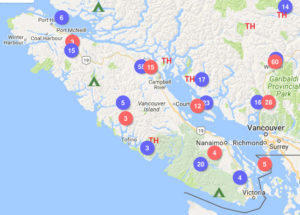
“People are passionate about spending time in our beautiful provincial parks, and that has increased demand for camping opportunities,” said George Heyman, Minister of Environment and Climate Change Strategy.
“The additional campsites, combined with upgrades to existing facilities, will improve the overall experience of BC’s natural beauty and provide a range of camping opportunities for everyone to enjoy.”
Ranging from backcountry to group camping, the new campsites are a mix of BC Parks and forestry recreation sites in areas with the highest demand: the Kootenay Rockies, Thompson Okanagan, Lower Mainland and Vancouver Island.
“With the expansion, there are now 11,000 camping spaces at 1,100 recreation sites around the province, for those who enjoy a more rustic experience,” said Doug Donaldson, Minister of Forests, Lands, Natural Resource Operations and Rural Development.
Along with the additional campsites, existing facilities and infrastructure have been upgraded or added in many campgrounds. This includes roads, water taps, power, dishwashing stations, accessible toilets, trails and a new large shower building at the Hampton campground in E.C. Manning Provincial Park. A new playground has been installed at Shuswap Lake. Walk-in sites at Montague Harbour all have individual food caches.
“The expanded mix of BC Parks and forestry recreation site campsites is very welcome news,” said Joss Penny, chair, Camping and RVing BC Coalition. “More than two million campers from BC, Alberta and Washington are expected to camp or RV in British Columbia in the next two years.”
Last Saturday, July 21, Canada’s Parks Day was an annual event to highlight the importance of parks in creating and maintaining healthy ecosystems, protecting critical habitat for species at risk, and contributing to human health and well-being. Educational and family-oriented events were held in parks and historic sites across the country.
BC Parks Foundation has launched the Healthy By Nature initiative, where 100 health-care providers will lead walks in 100 parks throughout B.C. to highlight the health benefits of spending time in nature. To register locally: healthybynature.ca
British Columbia’s provincial parks receive over 21 million visits each year. There are 1,033 provincial parks, recreation areas, conservancies, ecological reserves and protected areas, covering more than 14 million hectares, or about 14.4% of the provincial land base.
BC Parks manages the third-largest parks system in North America, exceeded only by the United States’ National Park Service and Parks Canada. http://www.env.gov.bc.ca/bcparks/
As of June 30, 2018, BC Parks had nearly 168,000 reservations made through the Discover Camping reservation service, with the majority of reservations originating within BC. Of the 10,700 campsites BC Parks manages, approximately 55% are reservable, and 45% remain available on a first-come, first-served basis.
Recreation sites and trails: http://www.sitesandtrailsbc.ca/
Most of the new campsites in BC Parks are either on the Discover Camping Reservation Service, or will be for the 2019 camping season. Camping for recreation sites is on a first-come, first-served basis. Reservations can be made online: https://secure.camis.com/DiscoverCamping/Home.aspx

The newborn whale was reported alive and swimming with its mother, J35, and other members of J-pod near Clover Point on the Victoria shoreline in mid-morning. A Center for Whale Research (CWR) team was on the water in Haro Strait at the time and immediately responded to photo-document the newborn calf for the long-term census study that the Center for Whale Research maintains for the US and Canadian governments.
Unfortunately, by the time the CWR crew arrived on scene, the newborn calf was deceased, and the pod had traveled several miles eastward of the reported sighting location. The baby’s carcass was sinking and being repeatedly retrieved by the mother who was supporting it on her forehead and pushing it in choppy seas toward San Juan Island, USA. The mother continued supporting and pushing the dead baby whale throughout the day until at least sunset.
A resident of San Juan Island near Eagle Cove reported: “At sunset, a group of 5 to 6 females gathered at the mouth of the cove in a close, tight-knit circle, staying at the surface in a harmonious circular motion for nearly 2 hours. As the light dimmed, I was able to watch them continue what seemed to be a ritual or ceremony. They stayed directly centered in the moonbeam, even as it moved. The light was too dim to see if the baby was still being kept afloat. It was both sad and special to witness this behavior.”
As of sunset last night, July 25, J35 was still pushing the dead calf near East Point, Saturna Island. Killer whales and dolphins have been known to support and transport their dead calves for as long as a week – a testament to the amazingly strong mother/offspring bond and caring.
The newborn orca will not be given an alpha-numeric designation as a member of the SRKW population because it did not survive long enough to demonstrate its viability. Approximately 75% of newborns in the recent two decades following designation of the Southern Resident killer whale population as “Endangered” have not survived, and 100% of the pregnancies in the past three years have failed to produce viable offspring. The Department of Commerce, NOAA Fisheries, has designated the SRKW population as a “Species in the Spotlight” due to its imminent threat of extinction.
The SRKW population decline and poor reproduction is thought to be food related, given that populations of Chinook salmon (primary prey for the SRKW) seem to be challenged.
The American Fisheries Society in its landmark publication “Salmon 2100” indicates that changes in core policy drivers are required if wild salmon are to survive this century. “It follows that these same core policy changes are required to save the whales,” says CWR. Hatchery salmon are considered inferior for whale consumption and not sustainable.
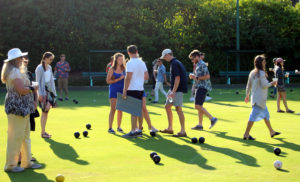
Lawn Summer Nights is a four-week social event being held at the Victoria Lawn Bowling Club in Beacon Hill Park this month. Part of a national activity in 17 cities organized through Cystic Fibrosis Canada, all proceeds help with cystic fibrosis research.
After just two nights, the Victoria-based chapter had raised $44,000; they’re aiming for $100,000 by the end of the fourth Thursday night, July 26. www.lawnsummernights.com
Usually thought of as an activity for seniors, lawn bowling has attracted a 25-to-35-year-old set for these evening parties on the two lawns at 100 Cook Street. Figuring out the game and developing some expertise with throws seemed almost as much fun as the food, beer, a bit of dressing up in team costumes, and enjoying the evening sunshine.
Funds brought in by the 4-person teams are raised through team sponsorships, pooled from other activities, and online. On site, funds are raised through dinner and beverage ticket sales.
Victoria organizer for the event since 2013, Sheleena Gutierrez, says funds support 42 clinics across Canada, as well as research at Sick Kids Hospital in Toronto, plus general awareness (public education), and advocacy for medications to be covered in pharmaceutical plans.
>> Photo: On a warm summer evening, July 19, young lawn bowlers played in 36 teams to raise funds for cystic fibrosis.
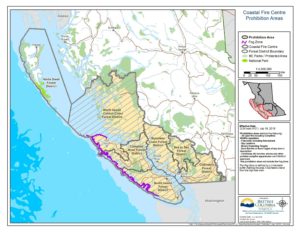
Tuesday, July 17 ~ On Wednesday, July 18 at noon, all open burning (including campfires and Category 3 fires) will be prohibited within the Coastal Fire Centre, with the exception of Haida Gwaii and the area known as the fog zone.
Category 2 open burning is already prohibited in the region. The additional prohibitions will help prevent human-caused wildfires and protect public safety. They will remain in effect until Oct. 19, 2018, or until the public is otherwise notified. A map of the affected areas is available online at: http://ow.ly/j94230kZQgz
the fire prohibitions are due to high temperatures and no rain in the immediate forecast. Since April 1 of this year, 69% of wildfires in the Coastal Fire Centre have been caused by people. Human-caused wildfires are considered to be entirely preventable, and can divert critical firefighting resources away from naturally occurring wildfires.
These prohibitions apply to all public and private land, unless specified otherwise – for example, in a local government bylaw. Please check with local government authorities for any other restrictions before lighting any fire.
In Sooke, their prohibition announcement came out this afternoon, specifying that their ban applies to all open burning including campfires, beach fires and backyard fire pits within the District of Sooke. Burn barrels are prohibited year-round. “Propane and gas fueled BBQ’s and campfires are still permitted but are to be used with caution and only in appropriate areas,” says Matt Barney, Assistant Fire Chief, Sooke Fire Department.
CSA-rated or ULC-rated cooking stoves that use gas, propane or briquettes and portable campfire apparatus (using briquettes, liquid or gaseous fuel) are okay in the Coast Fire Centre, so long as the height of the flame is less than 15 cm in height.
The following activities are also prohibited:
* open fires that burn woody debris in outdoor stoves
* the use of stoves and other portable campfire apparatuses that are not CSA-approved or ULC-approved
* the use of tiki torches, fireworks, firecrackers, sky lanterns, chimineas, burning barrels or burning cages of any size or description
* the use of binary exploding targets (e.g. for rifle target practice)
Anyone found in contravention of an open burning prohibition may be issued a ticket for $1,150, required to pay an administrative penalty of $10,000 or, if convicted in court, fined up to $100,000 and/or sentenced to one year in jail. If the contravention causes or contributes to a wildfire, the person responsible may be ordered to pay all firefighting and associated costs.
The Coastal Fire Centre covers all of the area west of the height of land on the Coast Mountain Range from the U.S.-Canada border at Manning Park, including Tweedsmuir South Provincial Park in the north, the Sunshine Coast, the Lower Mainland, Vancouver Island, the Gulf Islands and Haida Gwaii.
To report a wildfire or open burning violation, call 1 800 663-5555 toll-free or *5555 on a cellphone. For the latest information on current wildfire activity, burning restrictions, road closures and air quality advisories, go to: http://www.bcwildfire.ca
Wildfire news on Twitter at https://twitter.com/BCGovFireInfo and on Facebook at
http://facebook.com/BCForestFireInfo
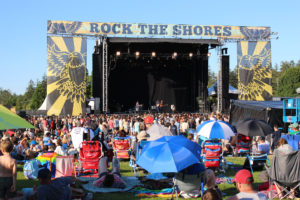
The rock band Bahamas teased the crowd and organizers that ‘Rock the Shores’ might have been better named ‘Rock the Forest’ (because they couldn’t see the ocean from the stage and venue behind West Shore Parks & Recreation in central Colwood). But even with that, Sunday evening at the weekend-long Rock the Shores event was a rockin’ good time for music festival goers of all ages.
That diversity of people attending the three-day festival July 13 to 15 could have possibly been the highest achievement of the event put on by Victoria-based Atomique Productions.
Atomique built a suitable pop-up venue and people did come. Games and sprinklers for the kids, deck chair seating for older folks, VIP section under shade, a variety of food and games for everyone, water refilling stations, lots of bins for recycling and garbage, and ample parking that was well organized — Atomique set themselves up right for success. That included a wide selection of musical genres throughout the weekend, and scheduling their biggest-name act for the last performance on Sunday evening.
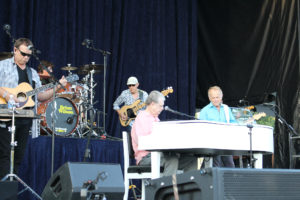
Brian Wilson had come off back surgery only three weeks ago, and needed help getting to the white grand piano at center stage. But as a consummate pro, he fluidly delivered the old hits as well as new, giving shout-outs to various key members of the band.

Many people had arrived on bicycles, that could be parked securely under the watchful eye of Mountain Equipment Coop personnel. There was venue security and a few members of West Shore RCMP on hand to round out site security amidst the thousands of people on site.
Overall, the event was pretty tame compared to legends of musical festivals of days gone by. But there was still a bit of beer/pop tossing over unsuspecting people in the crowd. Beach balls got tossed around. Kids on parents’ shoulders, friends dancing and hugging, old folks reminiscing together — a nice time for all.
You know you’ve experienced good quality rock music when the loud bass absorbed up at the front of the stage is in synch with your body rhythms, not jarring. And, when everyone in the crowd seemed to relax and have a really good time.
It looks good on Colwood and West Shore Parks & Rec for having a facility able to support an activity with such broad scope.
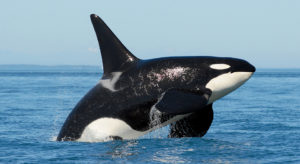
Friday, July 13 ~ BC. Keeping a distance from whales: new regulations. Whales and other marine mammals are the subject of new Canadian regulations (previously recommendations) by which boaters are to maintain certain distances or be faced with hefty fines.The new rules that came into effect July 11 require boaters to maintain a 100-metre buffer zone (200 metres for orcas).
Under the Fisheries Act, penalties range from $100,000 to $500,000. Repeat offences could result in a higher fine amount or even imprisonment, according to the Department of Fisheries and Oceans.
The new rules will impact the on-water tourism industry, particularly whale-watching excursions. Vessels must stay out of the path of oncoming whales out to 400 yards (366 m). Vessels may not intercept a whale or be positioned in the path of a whale.
Among other reasons, the proximity of loud motorized vessels is thought to interfere with the ability of whales to communicate with each other for feeding or maintaining pod cohesion.
In BC, the orca is an iconic aspect of regional arts and culture, tourism, and Indigenous culture.
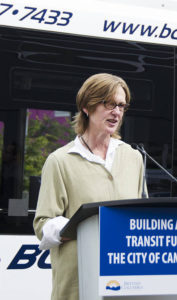
Wednesday, July 11 ~ BC. BC Transportation and Infrastructure (MOTI) Minister Claire Trevena said yesterday that she will hold a discussion on Thursday July 12 with her western Canada counterparts about different approaches to providing intercity bus service. [See this article on its own page]
This is in the wake of Greyhound Canada announcing that by October 31, 2018 it will end all intercity bus service in western Canada (points west of Sudbury, Ontario through Manitoba, Saskatchewan, Alberta and BC).
“We got very little notice that Greyhound was pulling out of western Canada,” Minister Trevena told media. “It’s a a Canadian problem affecting people in Ontario, out to the coast,” she said. Only one route remains in BC — that one runs Vancouver-Seattle, operated by the Greyhound out of the United States.
Trevena says that the BC government aims to assure people that they will have safe, reliable transportation by bus. She articulated that not everyone can afford to travel by plane, train or car.
“We”ll need to have some bus service, and will try to deal with that before October 31,” said Trevena, adding that private bus service providers will be part of a possible future solution. She also said the Ministry would be “talking to people within communities” (apparently including municipalities) to try and “make sure the gap is filled”.
“Very quickly private operators came in and built a route,” said Trevena about working with private operators in other situations. “Nothing is off the table.” BC Transit will also be in the discussion loop.
“We want to make sure people can travel safely and affordably around this province,” the Minister declared, adding that “the federal government does have a role to play” in seeing that bus service is provided “right through” Canada. “They have not done so, so far.”
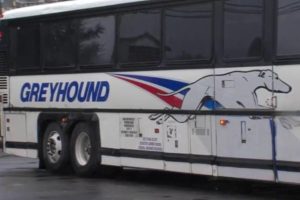
Trevena said that the BC Government did not want to directly subsidize Greyhound, in part because the company’s services were not meeting the needs of riders. She said that daytime routes are more suitable for intercity travel.
BC has been running a pilot project in the north on Highway 3 and some other interior routes this year, in response to Greyhound providing an earlier notice about “pulling out in the north”, said Trevena.
It would seem by Trevena’s surprise at Greyhound’s announcement this week, that MOTI did not extrapolate a pullout beyond the north. That’s even though “Greyhound executives spent the last five years trying to work some resolutions out,” as Trevena told media yesterday.

Monday, July 9 ~ BC. Greyhound Canada bus service ends in BC as of October 31, 2018. That’s in addition to all of the private company’s bus services ending in Manitoba, Saskatchewan and Alberta on that date, as well as in Ontario west of Sudbury. [Read this article on its own page]
One route remains in BC — from Vancouver to Seattle — because that route is run by the US division of Greyhound. This will have a significant impact on rural transportation services in BC.
Greyhound Canada cited financial survival (due to a significantly low level of ridership — worsening since 2010) as their reason for dropping the service.
Low-cost airline travel and more efficient cars are likely part of the competition factor. Business critics say that Greyhound did not appreciably improve any of their services over the years, thereby offering less and less of a desirable transportation option.
Upon hearing the news today, BC’s Minister of Transportation and Infrastructure Claire Trevena issued a statement in response to news that Greyhound Canada is discontinuing intercity bus service in British Columbia, and much of Canada:
“Greyhound’s decision to completely eliminate service in Western Canada by October 31, 2018 is hugely problematic for people who depend on Greyhound in the Interior, Sea-to-Sky, and to get to and from Alberta. This move will leave people with limited options to get around, and this will likely impact the most vulnerable.
“It’s unfortunate that Greyhound did not communicate their plans sooner. At no point did Greyhound reach out to me, or my staff, to have a conversation on solutions to keep people connected – something I would have expected, given their long history in this province,” said Trevena.
The BC Government will be looking into options: “In the weeks and months ahead, I will be sitting down with other service providers, the private sector and local government to discuss how we can ensure people have access to safe, reliable and affordable transportation to get from one community to the next. In the meantime, I hope that other local, private operators will see an opportunity to bring a badly needed service to the parts of the province most affected by Greyhound’s decision.”
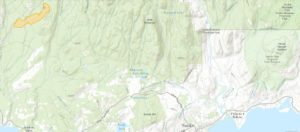
“Crews are working inward from the perimeter, doing mop-up activities,” says Juan de Fuca Emergency Coordinator Jeri Grant today, July 9.
Yesterday on Sunday July 8, there were still 63 firefighters, two pieces of heavy equipment, seven water tenders, and two helicopters on site, for attending to the active wildfire.
The fire event is now called ‘non active’ by the BC Wildfire Service. Mopping-up including looking for hot spots and putting those out. That process can take one to two weeks with ground crews, heavy equipment and water tenders, says Grant.
Some BC Wildfire information last week showed the burned area to be as much as 100 hectares. “But the area that burned out didn’t get beyond 84 hectares,” says Grant. “It looked larger than that with all the smoke, but once helicopters got up in the air Friday morning, the 84-hectare area was confirmed.
Smoke from the fire reached into parts of Greater Victoria for a few days during the most active burning period.
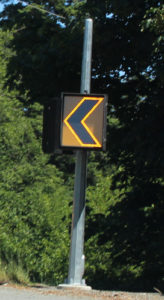
Is the approach to encouraging public transit use (six new bus pullouts) the right approach for major expenditure? There have also been recent improvements with lighting, safety signage, speed readers, and line painting plus specific bridge improvements and work along Otter Point Road.
Are crosswalks working well in town centre? What about the no-left-turns at Townsend Road that have impacted business and community — can that be reversed? Are there enough signalized intersections (in addition to the one coming at Sooke River Road)?
What about the confusing road name change to West Coast Road after you’re west of Otter Point Road?
With the Premier being MLA for the area that includes Highway14-dependent Sooke, this is an optimal time for input.
This online opportunity for input follows the walkabout display-board public input event that was held at EMCS in Sooke last month.
>> This article first published in the July 6, 2018 print/PDF issue of West Shore Voice News.
Saturday, July 7 ~ JUAN DE FUCA. As of 11:25 am today Saturday July 7, the Tugwell Creek fire west of Sooke is being held (unlikely to spread) at 80% contained.
Resources today include 88 firefighters, seven water tenders, heavy equipment and three helicopters says #BCwildfire | @BCGovFireInfo
The fire is on private forestry land. A nearby beekeeper’s operation is apparently not adversely affected. Smoke has periodically reached into the Greater Victoria area contributing to grey skies and minor air quality issues for some residents.
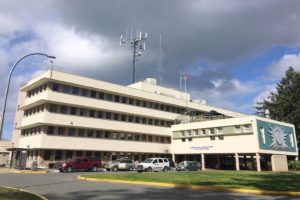
Friday, July 6 ~ DUNCAN. A new hospital will be built in the Cowichan Valley, it was announced today by Premier John Horgan. Construction is expected to begin in 2021.
The new facility in Duncan will triple the size of the current hospital (built in 1967) that has 134 beds.
The planning for a replacement hospital has been a collaborative effort between the Government of BC, Island Health, Cowichan Valley Regional District, Cowichan Valley Regional Hospital District, the municipalities of Duncan and North Cowichan, local First Nations and local stakeholder groups.
Leah Hollins, board chair, Island Health says: “Having a new hospital, with modern technology and advancements, will do a great deal to support patients and their families in the Cowichan Valley. It will also help attract quality medical professionals, who are in high demand across the province and the country.”
Sonia Furstenau, BC Green Party MLA for Cowichan Valley and spokesperson for health, congratulated her community on government’s announcement of a new hospital in Duncan. “Our region is growing rapidly, and for good reason. The Cowichan Valley is an incredibly resilient community that comes together time and time again to make the home we all share a better place. My hope is that this hospital can be a place where that community spirit is at its very centre. It should be a place where patients aren’t sleeping in hallways, the emergency room is able to cope with the patient load and mothers can give birth and know they are not at risk of losing their children.”
Thursday, July 5 ~ JUAN de FUCA. [UPDATE at 11:30 pm July 5 – fire partially contained, size is 84 hectares.]
The size of the wildfire area at Tugwell Creek was up to 100 hectares as of late last night. It’s one of 54 fires currently listed as a ‘fire of note’ in BC. BC Wildifre crews will be on scene again today, with the continued use of planes dropping fire retardant and helicopters dropping water.
The fire that started July 2 somehow became ignited in an area of timber leftovers from logging (known as ‘slash’).
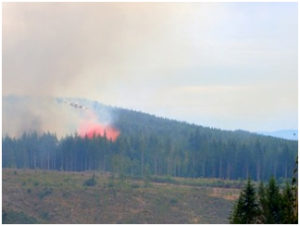
The size of the burning area is now listed at 85 hectares (up from 25 hectares as of this morning, and 60 hectares around 5:30 pm). The fire was first reported on July 2 with a size of about four hectares.
“Less wind and some rain would help,” says Juan de Fuca Emergency Coordinator Jeri Grant.
Today three helicopters dumping water and a plane dumping fire retardant were used at the scene.
Smoke is reaching through the west shore and other areas of Greater Victoria, creating grey skies.
Photo taken today July 4 by Al Wickheim from the west ridge above Tugwell Creek, about six miles upstream. Water tanker dropping fire retardant Tugwell Creek. Winds are from the east in this photo.
“Winds are variable and some fire crowning is making this a hazardous fire for air and ground crews,” says Wickheim. “We could hear the fire crackling from where we were. Fortunately there is no immediate threat to the bee hives of Tugwell Creek Meadery,” he said on Wednesday evening.

Of 60 active fires in the province (as of midnight July 3), the Tugwell Creek fire is one of three listed as “out of control” by the BC Wildfire Service. The fire was first reported on July 2 with a size of about four hectares.
“People don’t need to be alarmed,” says Grant. She says that people will see more fixed-wing planes dropping retardant, more helicopters dumping buckets of water, and more smoke. Welfare management has also sent out more ground crews.
The forest reserve land is part of Juan de Fuca, and the fire began in a slash area (where forestry activity leaves vegetative debris behind). There hasn’t been any lightning, so the fire is thought to have been caused by one or more persons with either cigarette butts, campfire, or use of ATVs in the back road areas. Even minor sparks can set off forest ‘fuel’ (leaves, branches, grassy areas, etc).
Actions are being handled by Wildfire BC and not the Otter Point Fire Department because the fire is beyond the Otter Point Fire Department boundaries. The fire is about 5 to 6 km away from Tugwell Road where there are homes and farms.

At their June 26 board meeting, the Sooke School District (SD62) board heard the preliminary results of a workforce engagement (employment satisfaction) survey done by the BC Government.
As reported out with stats and display graphics by Public Sector Research and Evaluation Manager Angela Matheson, it was shown that about 58% of SD62 employees participated.
Some key findings included — as might be expected within the teaching profession — that ‘organizational commitment’ was high, while overall organizational satisfaction showed a range of results.
A hybrid analysis found some things that appeared to be red flags for senior administration: 8% of respondents were pegged as ‘minimally engaged’, with another 6% as ‘disengaged’. Some interesting categories of ‘happily detached’ (8%) and also ‘unhappily dedicated’ (7%) were considered to be anomalies.
Generally speaking, job stability and pay levels were not contentious issues, as compared to the general base of public sector employees.
The survey was thought to be important at this time, as a significant number of new teachers have joined SD62 in the past year or two, and are therefore at the start of their employment curve with SD62 which is one of the largest employers in the west shore.
As might be expected, participation rates in the survey were lowest (23%) for teachers were are on-call (i.e. not full time). Those who work within SD62’s Westshore Centre for Learning and Training who work extensively with online technology and deal more directly with the workforce and a range of learning scenarios, showed the highest survey participation rate (90%).
The last survey of a similar nature was done by the school board back in 2003. Trustee Margot Swinburnson said she hoped this sort of information would be acquired more regularly. Trustee Denise Riley said the survey idea was initiated by senior administrative staff, to which Secretary-Treasurer Harold Cull responded with a comment that the “morale and health” of the organization required some quantification with a baseline. Superintendent Jim Cambridge said that “engaged, happy, satisfied employees” are the goal.
:::: This article first published in the June 29, 2018 print/PDF issue of West Shore Voice News.
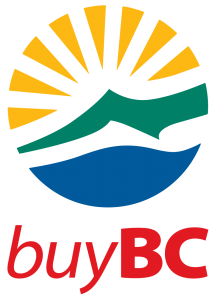 Saturday, June 23 ~ BC. Buy BC programming is being relaunched to boost BC’s agriculture industry and fuel public interest in shopping for made-in-BC products.
Saturday, June 23 ~ BC. Buy BC programming is being relaunched to boost BC’s agriculture industry and fuel public interest in shopping for made-in-BC products.
Buy BC marketing had been cancelled in the early 2000s, but will again make it easier for British Columbians to explore new and different products from around the province, said BC Agriculture Minister Lana Popham at a farmer’s market in Victoria, June 23.
Buy BC will introduce BC-produced food and drink in BC and globally, said Popham. Cost-shared funding is available to agriculture and seafood producers, processors and co-operatives, as well as relevant industry associations, plus local agricultural fairs and markets.
Logo-licencing agreements will be available for BC agriculture and seafood companies that do not require cost-shared funding, but who use the Buy BC logo on products.
Local food is sold at over 145 community farmers’ markets across the province, says the BC Association of Farmers’ Markets.
The Buy BC Partnership Program will provide $2 million per year, over the next three years, to help eligible applicants with marketing using the Buy BC logo on their products or promotional materials. The program will be administered and delivered by the Investment Agriculture Foundation of BC, with the support of the Ministry of Agriculture.
Friday, June 22 ~ BC. The upcoming referendum on electoral reform is the public’s opportunity to indicate how you would want to vote in future BC provincial elections. That would be either first-past-the-post (present system, where the winner by even one vote takes home the prize) or a form of proportional representation (you’ll get three options).
As announced late Friday afternoon, June 22, the referendum ballot questions have been amended by cabinet and government, based on recommendations from the chief electoral officer.
It’s going to take a bit public education by the provincial government to do a fair job of getting a valid sense of what people really want. Elections BC will administer and enforce referendum advertising rules and the activities of proponent and opponent groups during the referendum campaign period of July 1, 2018 to 4:30 pm on November 30, 2018.
The official questions for the referendum are:
- Which system should British Columbia use for provincial elections? (Vote for only one): • The current first-past-the-post voting system • A proportional representation voting system.
- If British Columbia adopts a proportional representation voting system, which of the following voting systems do you prefer? Rank in order of preference. You may choose to support one, two or all three of the systems: • Dual Member Proportional (DMP) • Mixed Member Proportional (MMP) • Rural-Urban Proportional (RUP).
Voting will be by mail-in ballot during the voting period of October 22, 2018 to 4:30 pm on November 30, 2018. This will be BC’s third referendum or plebiscite conducted by mail-in ballot. In order to vote in the referendum, eligible British Columbians must be registered to vote with Elections BC.
Electoral reform referendum regulation: https://engage.gov.bc.ca/app/uploads/sites/271/2018/06/ReferendumRegulation2018.pdf
Attorney General’s report and recommendations for the 2018 referendum on electoral reform: https://engage.gov.bc.ca/app/uploads/sites/271/2018/05/How-We-Vote-2018-Electoral-Reform-Referendum-Report-and-Recommendations-of-the-Attorney-General.pdf
Recent changes to the Election Act: https://news.gov.bc.ca/15423
Elections BC: www.elections.bc.ca
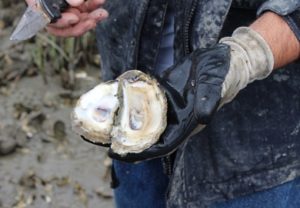 Thursday, June 21 ~ Vancouver Island. There have been cases of shellfish-related illness on the south section of Vancouver Island in individuals who have self-harvested in closed areas in June. Island Health is reminding self-harvesters to be aware of shellfish closures during the harvest season. The best way to protect yourself and others is not to harvest shellfish from closed areas.
Thursday, June 21 ~ Vancouver Island. There have been cases of shellfish-related illness on the south section of Vancouver Island in individuals who have self-harvested in closed areas in June. Island Health is reminding self-harvesters to be aware of shellfish closures during the harvest season. The best way to protect yourself and others is not to harvest shellfish from closed areas.
Toxic forms of algae often increase in ocean water in the summer with warming water temperatures. Concentrations of toxins can accumulate in filter-feeding shellfish. Shellfish that can be affected include: clams, oysters, whole scallops, mussels, cockles, geoducks, whelks, periwinkles, or the innards of crab (toxin can be in flesh if the crab is boiled before innards are removed).
Shellfish that have accumulated toxins will not appear to be ill or contaminated. Cooking does not render the shellfish safe from toxins though will reduce disease from bacteria and viruses. When contaminated shellfish are consumed, illness can result. Toxins, such as saxitoxin, can cause human illness including Paralytic Shellfish Poisoning (PSP). Saxitoxin and PSP are a frequent cause for shellfish closures.
There is no safe place to harvest shellfish without checking shellfish closures first. Environmental testing in June has shown very high environmental levels of toxins in the harvesting area where human illness occurred. The absence of an algae bloom is not an indicator of shellfish safety.
Symptoms of shellfish poisoning can occur within minutes and/or up to 24 hours after eating contaminated shellfish. In mild cases, symptoms may include tingling, vomiting, diarrhea, abdominal cramps, headache, dizziness, muscle weakness, disorientation, memory loss, loss of coordination, or difficulty swallowing. These symptoms disappear within several days. In serious cases, seizures, unstable blood pressure, paralysis, difficulty breathing, coma or death may occur.
At the first sign of symptoms, contact the Poison Control Centre at 1-800-567-8911 for first aid advice and seek medical attention immediately.
Shellfish harvested for sale are monitored and tested by the CFIA; shellfish from an approved source are considered safe for consumption in moderate amounts. Island Health, BCCDC and FNHA work with agencies to improve monitoring in areas not used for commercial harvesting and which may have greater use by self-harvesters.
• Closure information: http://maps.bccdc.org/shellfish/
http://www.pac.dfo-mpo.gc.ca/fmgp/contamination/biotox/index-eng.html
• Marine toxins: http://www.healthlinkbc.ca/healthtopics/content.asp?hwid=ug2961
• Self-harvesting:
http://www.bccdc.ca/health-info/food-your-health/fish-shellfish/shellfish-harvesting-control
For information please contact Island Health, Health Protection office: 250-519-3401.
 Friday June 15 ~ BC. Today June 15, 2018, changes to Rules under the Real Estate Services Act that dictate how REALTORS® work with consumers have come into effect. The Rules, mandated by the Office of the Superintendent of Real Estate (OSRE) and finalized on April 27, 2018, have been amended to ensure that REALTORS® make adequate disclosures, so that consumers can make informed decisions. For many Realtors, the changes mean diminished financial returns in their overall sales income.
Friday June 15 ~ BC. Today June 15, 2018, changes to Rules under the Real Estate Services Act that dictate how REALTORS® work with consumers have come into effect. The Rules, mandated by the Office of the Superintendent of Real Estate (OSRE) and finalized on April 27, 2018, have been amended to ensure that REALTORS® make adequate disclosures, so that consumers can make informed decisions. For many Realtors, the changes mean diminished financial returns in their overall sales income.
“BCREA, together with the Real Estate Council of British Columbia (RECBC), has been hard at work to update the Applied Practice Courses for new licensees. BCREA has also been updating its continuing education courses and nearly two dozen standard legal forms that have been impacted by the changes,” said British Columbia Real Estate Association (BCREA) CEO Darlene Hyde. “The new rules governing real estate practices mark a significant shift in how REALTORS® in BC work with their clients. It’s important that consumers know what to expect when the changes come into effect.
”REALTORS®, consumers and conflicts of interest: One of the changes is a ban on dual agency. Dual agency occurs when a REALTOR® represents more than one party in a real estate transaction. That can be a buyer and a seller, two or more buyers, or a landlord and a tenant. The ban was recommended by RECBC’s Independent Advisory Group in 2016. Exemptions will be possible in limited circumstances. Under the prohibition on dual agency a real estate agent cannot represent two clients with competing interests at the same time.
REALTORS®, consumers and compensation: From June 15, REALTORS® are required to make more disclosures on the commissions they receive on transactions. Once the amendment comes into effect, a REALTOR® must give the seller a copy of the disclosure form before presenting each offer or counter-offer from potential buyers. This form explains how the commission will be shared with other brokerages involved in the transaction (the buyer’s brokerage) and any other payments the REALTOR® expects to receive as a result of the transaction.
BCREA has worked with its 11 member boards “to make these changes as seamless and as transparent as possible,” says BCREA. Despite that, the BC Green Party issued a statement one day ago (June 14) in response to “ongoing concerns expressed…by realtors across BC”. Green Party leader Andrew Weaver “is once more calling on the Minister of Finance and the Office of the Superintendent of Real Estate to extend the timeline for the introduction of the real estate rule changes”. The changes had already been delayed once — they were to first come into effect March 15, 2018.
BCREA says they are actively working to educate REALTORS® on the implications of these changes so they can continue to serve consumers with integrity and professionalism when the Rule changes come into effect.
“These changes will profoundly alter for the foreseeable future the way consumers initially interact with their REALTOR® and the ban on limited dual agency will have a negative impact on consumer choice with respect to their selection of REALTOR® in some circumstances,” said Hyde. “BCREA has done its utmost to facilitate the transition to the new Rules and we stand behind a strong regulatory regime, informed and knowledgeable customers and professional REALTORS®.”
For more information on the Rule changes: https://knowledge.recbc.ca/
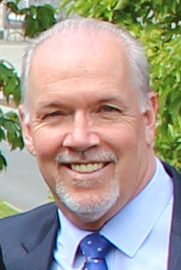
Horgan said Krog will stay on until the Fall 2018 municipal election period, and “I wish him well”.
Krog would stay on in the BC legislature if he does not win the Nanaimo mayoralty seat.
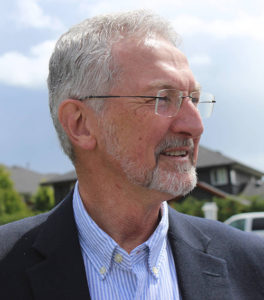
Tuesday, June 12 ~ VANCOUVER ISLAND. What this will do for the fragile state of the BC NDP/Green balance of power in the BC Legislature is what grabs public attention over the expected announcement that long time NDP MLA Leonard Krog will run for mayor of Nanaimo in the October 20 municipal election. His announcement is expected at 5 pm tomorrow June 13 in Nanaimo.
The 41 NDP seats under John Horgan are propped up by three Green seats for a functioning minority government considered ‘progressive’, with the BC Liberals holding 42 seats. If Krog relinquishes his MLA seat, a by-election would need to be called within six months.
Krog was first elected to the BC Legislature in 1991 in the riding of Parksville-Qualicum. He lost in 1996, but regained a seat in 2005 in the Nanaimo constituency. In 2003 he ran for the leadership of the NDP but lost to Carole James who is now the province’s finance minister and who enjoys a degree of immunity from Horgan.
Krog won the Nanaimo riding again in 2017 but was not invited into the Horgan cabinet last year after the NDP formed government. But he is Government Caucus Chair. He previously served as the Official Opposition spokesperson for Justice (Attorney General).
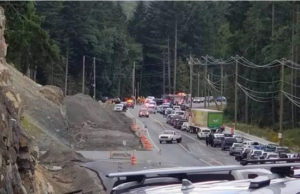
West Shore RCMP this evening have reported that the man driving a southbound vehicle was pronounced deceased at the scene, and that a woman passenger in that vehicle was transported to hospital with serious injuries. A woman who was driving a northbound vehicle was also transported to hospital with injuries.
“The Coroner attended the collision scene and notification of next of kin is being completed with the family. Alcohol is believed to be a factor in this fatal collision and police investigators are gathering evidence as to the level of impairment of the female driver and any driving evidence observed by witnesses,” says Cpl. Chris Dovell.
The highway remained closed for several hours while the West Shore RCMP Traffic Unit and RCMP South Island Traffic Services Collision Analyst conducted the collision investigation. This highway closure was expected to cause delays for travellers and police are asking for patience while investigators complete their examination of the collision scene.
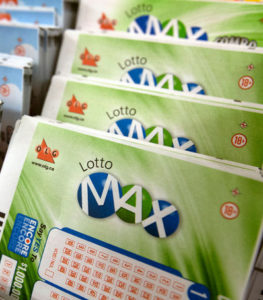 Friday, June 8 ~ NATIONAL. The largest-ever Lotto Max jackpot at $60 million was won by a ticket holder in Quebec this evening. The June 8 draw numbers were 12 25 27 29 34 44 45 with bonus number 07.
Friday, June 8 ~ NATIONAL. The largest-ever Lotto Max jackpot at $60 million was won by a ticket holder in Quebec this evening. The June 8 draw numbers were 12 25 27 29 34 44 45 with bonus number 07.
There were 52 Maxmillion opportunities. On Vancouver Island, there are two winners of half a Maxmillion, i.e. $500,000 each. One of those winners purchased their ticket in Victoria, and the other in Ladysmith.
In Vancouver there is also a winner of $500,000 as a shared prize. In Burnaby there is a $1 Maxmillion winner.
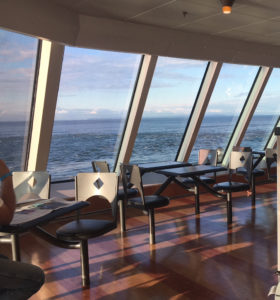
The vessel is the first of two to be converted to operate on natural gas, which is much cleaner for the environment than marine diesel. The Spirit of Vancouver will undergo a mid-life upgrade from Fall 2018 to Spring 2019.
Other upgrades in the Spirit of British Columbia include the renewal of navigation equipment, propulsion equipment components including gearboxes, rudders, steering system, bow thrusters, propeller blades, LED lighting, more efficient air conditioning equipment to reduce energy consumption and four marine evacuation systems.
The vessel’s passenger areas have been upgraded with new carpeting, furniture upholstery, new table tops, refurbishment of all public washrooms, as well as additional washrooms on Deck 5. A new coffee bar has been added on Deck 6 and the size of the gift shop has been doubled.
 Saturday, June 2 ~ SHIRLEY, BC. The Sheringham Lighthouse Preservation Society is always looking for new members. Be a volunteer at the lighthouse or at info booths in the community.
Saturday, June 2 ~ SHIRLEY, BC. The Sheringham Lighthouse Preservation Society is always looking for new members. Be a volunteer at the lighthouse or at info booths in the community.
A lot of renovations are going on at the lighthouse this summer. The lighthouse is a recognized Canadian Heritage Site.
Preserving a lighthouse is about preserving history and culture.
Donations welcome. Visit www.sheringhamlighthouse.org
 Wednesday, May 30 ~ VICTORIA. On Saturday, June 2 the Honourable Janet Austin, Lieutenant Governor of British Columbia, will host a public garden party to celebrate the 65th anniversary of the coronation of Queen Elizabeth II.
Wednesday, May 30 ~ VICTORIA. On Saturday, June 2 the Honourable Janet Austin, Lieutenant Governor of British Columbia, will host a public garden party to celebrate the 65th anniversary of the coronation of Queen Elizabeth II.
The lieutenant governor will welcome members of the public on the east lawn to enjoy music and tea service. There will be musical entertainment by the Commodores Big Band, and a craft area will be set up for children to make their own crowns.
This free event is open to everyone. In the spirit of the occasion, guests are encouraged to wear fancy hats and gloves.
Government House is located at 1401 Rockland Ave in Victoria. The event runs 2 to 4 pm.
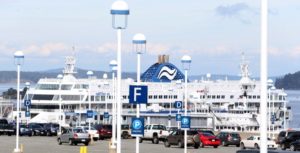
Friday, May 25 ~ VANCOUVER ISLAND. If you have some ideas to improve service at the BC Ferries Swartz Bay terminal, here’s your chance. There’s an public input portal available to June 8 at www.bcferries.com/swbvision
This is part of a broader program announced earlier this month which includes meetings with key stakeholders and pop-up sessions at the terminal in late May and early June.
This program runs through to Fall 2018 to gather community feedback to better understand the important role that the terminal plays in the experience of communities and customer travel experiences within the regional transportation network.
Feedback will inform design concerts for the terminal, taking into account the collective needs of BC Ferries and the community. Customers and the community will be presented with possible design options.
Terminal redevelopment will be done over several years. Public engagement will continue as the terminal is designed and throughout construction which is scheduled to begin in 2021.
Since the previous master plan of 2004, there have been upgrades to ticket booths and traffic flows, and some berth modifications. The new Terminal Development Plan will guide long-term planning and investment in future improvements for Swartz Bay. “The long-term plan is for a more efficient and pleasurable experience for customers while supporting growth in the region by moving people and goods more easily,” said BC Ferries in a news release.
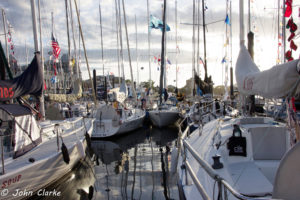
There will be six race starts at Clover Point: Juan de Fuca Race 9 am; Cape Flattery Race 9:10 am; Cape Flattery Race for Multihulls and Juan de Fuca Race for Multihulls 9:20 am; Swiftsure Ligthship Classic and The Hein Bank Race 9:30 am; Inshore Classic Race (Flying Sails) 9:40; Inshore Classic Race (Legends of Swiftsure, Cruising) 9:50 am. Race officials will use VHF Channel 9 to coundown each race start.
The public comes in droves to watch the race starts, but there is an increasing number of armchair sailors from around the world who follow the races online using Swiftsure’s Race Tracker .
In 2017 over half a million people peered into Swiftsure’s race tracker online. Recent advances in data communication technology enable regular and consistent reporting of boat positions, allowing spectators to boats online.
There are 192 boats registered to sail this weekend. A skipper’s information meeting was held this evening. Most boats will have someone on the bow of most boats during the start. They are watching for opportunities for clean air (not having wind blanketed by sails of other boats that are upwind).
The first boats to finish will likely be the Juan de Fuca multihull fleet. The fastest boats could arrive before midnight on Saturday. The first monohulls racing the Juan de Fuca course could begin arriving after midnight or in the early Sunday morning hours.
Swiftsure appeals to all types of sailors, from experienced amateurs (racers and cruisers) to professional racers. The varied course lengths and uncertain sailing conditions test strategy, tactics, and seamanship. Swiftsure is considered a grueling test against the elements. Fog, drizzle/rain, heavy winds, strong tidal currents, darkness and the large number of commercial boats in the Strait of Juan de Fuca require a focus on safety and pose a constant challenge to mariner skills.
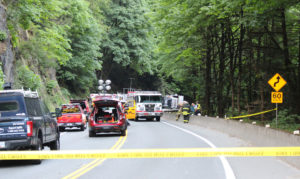
Earlier this evening there were personnel from several agencies at the motor vehicle incident (MVI) site including the Ministry of Transportation and Infrastructure, Ministry of Environment, BC Hazmat, Langford Fire Rescue, Colwood Fire Dept (with their hazmat truck), Mainroad South Island (with huge lights for nightwork), SPR Traffic Services, and the RCMP incident investigator. Among other activities, there was the work of drilling the tank on the tipped-over fuel truck in order to release the fuel.
Meanwhile, northbound motorists not able to get upisland were lined up along West Shore Parkway. Mainroad personnel advised them of the 180 km detour along the Pacific Marine Circle Route (Hwy 14 through Port Renfrew then down to Duncan via Hwy 18) that would take three to five hours.
But many travellers have chosen to wait it out in their vehicles until the road opens. Nearby at that recently developed corner of West Shore Parkway and Hwy 1 were services including a Shell Gas Station and Tim Hortons, and Quality Foods not too far along on Langford Parkway back into Langford.
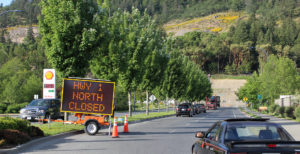
Mainroad has about 50 personnel available in total; there will be a shift change at 11:30 pm this evening after a long day. Some flaggers had to be redirected from construction sites earlier today, to help out with this MVI situation. “We’ve got all resources on this, this is big,” says Mainroad’s road manager Stuart Eaton.
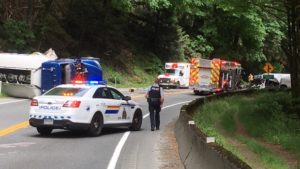
Today at 10:54 am West Shore RCMP, RCMP Traffic Unit and Langford Fire Rescue responded to a collision between a fuel truck and a passenger van on Highway 1 just before Finlayson Arm Road.
The passenger of the van was initially reported as trapped inside, however the driver was later removed from the vehicle with non-life threatening injuries. The driver of the fuel truck is believed to have only minor injuries. It did not appear that there was anyone else in the van.
First responders including HAZMAT crews have determined that the overturned fuel truck was leaking fuel, which has now been contained.
“The cause of the collision is under investigation,” says Cpl Chris Dovell of West Shore RCMP. The fuel spill is a risk for motorists and first responders, as well as a potential environmental hazard. We ask for patience from drivers who are affected by any delays as emergency crews deal with the closure of Highway 1,” says Cpl. Dovell.
There has been a reported three-sail wait at the Mill Bay ferry terminal as drivers tried to detour around the crash through the Saanich Inlet.
Hazmat crews have said it’s the same corner of the Malahat Highway where a fuel tanker crashed in April 2011, spilling 42,000 litres of gasoline and shutting down the route for nearly 24 hours.
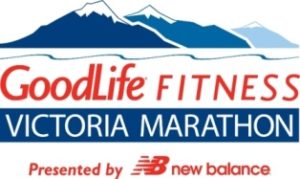 Wednesday, May 23 ~ VICTORIA. The 2018 GoodLife Fitness Victoria Marathon was officially launched last night with a Magical Mystery Retro Run in downtown Victoria. New initiatives, including an online training program and floating cheering stations for race day were announced, in conjunction with the launch of volunteer registration and the CHEK Charity Pledge Program (CPP). The 39th Annual GoodLife Fitness Victoria Marathon will take place on Sunday, October 7.
Wednesday, May 23 ~ VICTORIA. The 2018 GoodLife Fitness Victoria Marathon was officially launched last night with a Magical Mystery Retro Run in downtown Victoria. New initiatives, including an online training program and floating cheering stations for race day were announced, in conjunction with the launch of volunteer registration and the CHEK Charity Pledge Program (CPP). The 39th Annual GoodLife Fitness Victoria Marathon will take place on Sunday, October 7.
Olympian Bruce Deacon has been the event’s online coach for nine years, offering training programs for the Marathon, Half Marathon and 8K Road Race. This year will see a free run Victoria Online Training Group which participants can access through Facebook.
On race day, in conjunction with the Victoria HarbourCats, DFH, The Wilson Group and BC Transit, there will be floating cheering buses along the course. “We are excited about these new partnerships and look forward to supporting all of the participants,” said Cathy Noel, General Manager, GoodLife Fitness Victoria Marathon.

The Marathon event has 12 partners in the Charity Pledge Program (CPP). Three of those are official charities: KidSport Greater Victoria, Pacific Autism Family Network and the GoodLife Kids Foundation. Nine of the charity partners are in the CHEK Charity Pledge Program: Autism Speaks Canada, BC Cancer Foundation, Cerebral Palsy Association of BC, Greater Victoria Lifetime Networks, KidSport Greater Victoria, MOVE Adapted Fitness, NEED2 Suicide Prevention, Special Olympics, and the Victoria Hospitals Foundation.
“Since the program’s inception in 2005, over $1.7 million has been raised. The CPP is a great opportunity for large and small charities to raise money and awareness by using the marathon as a fundraising platform,” said Noel.
Since the first Victoria Marathon in 1980, 195,000 participants have crossed the finish line and this year it will surpass 200,000. “The economic impact to this community is tremendous, amounting to millions of dollars each year. In 2001 the economic impact was $2.1 million and in 2010 it was over $7.1 million. We will be conducting another study this year and we fully expect it to have grown even more,” said Jonathan Foweraker, President, Victoria Marathon Society.
To date there are 671 registered for the marathon (cap is 1,500), 1,084 for the Half Marathon (cap 3,500), and 440 for the 8K (cap 2,750). Race fees are currently $110 for the Marathon, $85 for the Half Marathon, $40 for the 8K Road Race and $20 for the Thrifty Foods Kids Run. To register: www.runvictoriamarathon.com
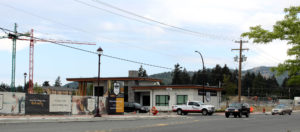
It was only May 5 when the Sales Centre opened at Belmont Residences in west Langford and already about 500 groups have come through to see the show suite and find out more about suites available in the 80-unit Phase 1 condo building.
“Currently we are in the preview stage of the program,” says Peter Gaby, sales director with DFH Real Estate Ltd. Sales start in the first half of June; appointments recommended for interest in early purchase.
“People view the sales centre which has the architectural model, wall graphics and digital screens outlining the product offering, the master plan and points of interest in the area as well as a 2-bedroom-plus-flex fully merchandised show suite,” Gaby said this week. The flex room is a popular feature which can be used for a home office, hobby room, exercise room or storage.
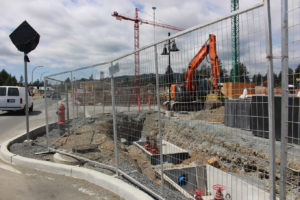
People are glad to hear that the 160,000 sq ft of commercial/retail space will be completed prior to Belmont Residences occupancy in early 2020. That includes Thrifty Foods grocery store as the main anchor tenant.
The sales centre is located on Division Ave (just off Jenkins/Kelly) across from the Westshore Town Centre.
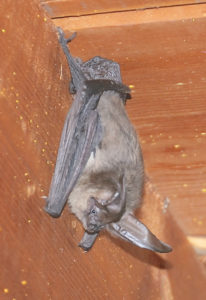
Thursday, May 17 ~ SOUTH VANCOUVER ISLAND. Habitat Acquisition Trust (HAT) is seeking volunteers and bat colonies for the Annual Bat Count. This citizen-science initiative encourages residents to count bats at local roost sites. “Bat counts are a wonderful way for residents to get involved in collecting important scientific information” says conservation specialist Paige Erickson-McGee. “No special skills are needed, you can be any age. Relax in a deck chair while counting!”
The Annual Bat Count begins Friday June 1, and will collect baseline data on bat populations before the devastating White Nose Syndrome fungal disease affects bats in the province.
“White Nose Syndrome is estimated to have killed more than seven million bats since it was first discovered in eastern North America a decade ago,” says Mandy Kellner, provincial coordinator of the BC Community Bat Program. “In March 2016, the disease was detected just east of Seattle, and has now spread within Washington State. This has greatly increased our urgency to understand bat populations in BC. We need the public’s help to census local bat populations – we never known when it is our last year to obtain population estimates before White Nose Syndrome causes widespread declines in western North America.”
Counts are easy, say HAT organizers. Volunteers wait outside a known roost site, such as a bat house, barn, bridge or attic, and count the bats that fly out at twilight. They record the final number along with basic information on weather conditions. Ideally, one to two counts are done between June 1 and 21 before pups are born, and one to two more between July 11 and August 5 when pups are flying.
“We know relatively little about bats on Vancouver Island, including basic information on population numbers,” says Erickson-McGee. “This information will be extremely valuable, particularly if it is collected annually. If people want to get involved but don’t have a roost site on their property, we will try to match them with a roost site nearby.”
To participate in the count program on Southern Vancouver Island, contact HAT’s Bat Coordinator at bat@hat.bc.ca or phone the HAT office 250-995-2428.
Funded in part by the Habitat Conservation Trust Foundation and private bat-loving donors, with technical support of the BC Conservation Foundation and biologist expertise from the Province of BC. The BC Community Bat Program provides information for people across the province dealing with bat issues on their property or who have questions about how to attract bats. To find out more about bat counts, or to get assistance dealing with bat issues, visit www.bcbats.ca or call 1-855-9BC-BATS.
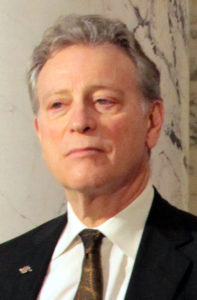
BC wants improvements to oceans protection. The federal government says it sees environmental protection going hand in hand with building the economy.
This week Finance Minister Bill Morneau dropped a lead weight of blame on BC Premier Horgan as the reason that the federal government, as part of announcing that it will provide financial support to Kinder Morgan for the challenged pipeline project. The funding is stapled to the project, so if Kinder Morgan bails, a new proponent would have the same advantage.
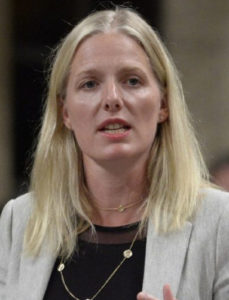
George Heyman, BC Minister of Environment and Climate Change Strategy sent the 3-page letter (plus 2-page appendix listing several meetings with DFO,the coast guard, environment ministry, national energy board, and more) to his federal counterpart, Catherine McKenna, Minister of Environment and Climate Change.
Heyman’s letter, in response to correspondence received from McKenna on April 26, 2018, can be viewed here: https://news.gov.bc.ca/files/316322_McKenna_FINAL_SIGNED.PDF
Heyman has outlined differences, as well as individual and shared priorities, of both governments related to protecting BC’s environment and economy from the effects of a catastrophic oil spill.
He has also suggested areas where the federal government needs to do more in areas of its jurisdiction, including improvements to the federal government’s Oceans Protection Plan.
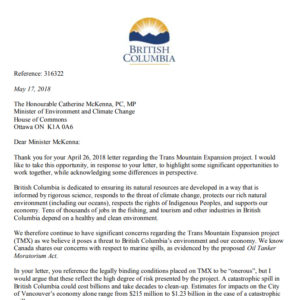 Heyman has also proposed ways both governments can cooperate on their respective research regarding the behaviour of spilled heavy oils, as wells as ways to jointly improve environmental protection.
Heyman has also proposed ways both governments can cooperate on their respective research regarding the behaviour of spilled heavy oils, as wells as ways to jointly improve environmental protection.
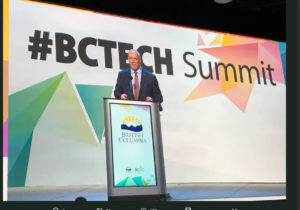
“BC succeeds when British Columbians succeed – and our province’s tech sector is proving that every day,” said Premier Horgan, adding that the sector has over 10,000 companies employing more than 106,000 people.
“Our job is to provide opportunities and partnerships that help companies and individuals innovate, succeed and grow. This approach delivers more jobs and a stronger economy, and helps support health care, education, housing and other public services that make British Columbia a great place to live and work.”
The Province announced that it is investing over $102.6 million in funding for 75 post-secondary research projects, through the BC Knowledge Development Fund (BCKDF). The projects will develop BC’s expertise and innovation in fields such as advanced super-computing and clean technology, to spur job creation, talent development and commercialize innovation.
To attract and retain the best graduate students, $12 million will be invested in graduate degree scholarships over the next three years, to support the priority STEM (science, tech, engineering and mathematics) programs, as well as Indigenous students and regional programs. The Province will also invest in women-in-technology scholarships to inspire a new generation of women to take up science and tech-based professions.
To develop tech talent, $10.5 million will be invested in co-op opportunities and entrepreneurial training for post-secondary students, so they can gain vital hands-on experience to be job-ready when they enter the tech sector.
To help make it easier for tech companies to recruit top international talent to BC, government will expand its Provincial Nominee Program Tech Pilot: priority processing for people in tech occupations (e.g. biotechnologists, software engineers and web developers).
“Investing in innovation is the best thing we can do to set our province up for success,” said Andrew Weaver, BC Green Party leader. “Technology is driving global growth and has the potential to add value to every sector of BC’s economy. This minority government is a unique opportunity to come together to champion a bold vision for the future of our province, and I am proud to be working in partnership with the government to support our tech sector.”
The BC government will unveil a province-wide tech strategy next year that will help provide all people with the ability to work and prosper in the communities they call home. In turn, the Province will invest in health care, education, housing and other public services that make BC a great place to live and work.
The third-annual #BCTECH Summit May 14-16 has been hosted by the BC Government in partnership with Innovate BC (a crown agency) which encourages the development and application of advanced or innovative technologies to meet the needs of BC industry.
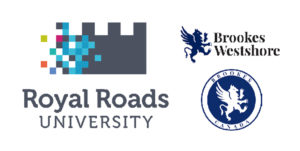 Saturday, May 12 ~ WEST SHORE. Royal Roads & Brookes Westshore team up for teaching & research
Saturday, May 12 ~ WEST SHORE. Royal Roads & Brookes Westshore team up for teaching & research
Royal Roads University (RRU) and independent school Brookes Westshore (Grades 6 to 12) have signed a 5-year memorandum of understanding (MOU) to foster a relationship between the two educational institutions through mutual cooperation in teaching and research.
Announced May 10, the MOU sets the foundation for future cooperation and collaboration as Brookes Westshore prepares to open to students in Sept 2018 right next door to RRU on Sooke Road in Colwood. They aim to create a hub to benefit students, staff and faculty at both institutions.
“Royal Roads looks forward to collaborating with Brookes Westshore as it offers a high-quality education next to our Hatley Park campus,” says Royal Roads University President and Vice-Chancellor Allan Cahoon. “We share a common vision of the importance of providing our students with an exceptional educational experience, through enhanced global understanding that supports our local community as well as the labour market needs in British Columbia.”
“Brookes is delighted to collaborate with Royal Roads to create a vibrant learning community on the West Shore,” says Jerry Salvador, Director of New School Development and Director of the Americas for Brookes Education Group. “This partnership extends our commitment to innovative education and will create unique learning opportunities for our students and faculty.”
Royal Roads and Brookes Westshore have agreed to cooperate in several areas, including marketing and recruitment, pathways for Brookes students to transition to university learning at Royal Roads, and teacher training.
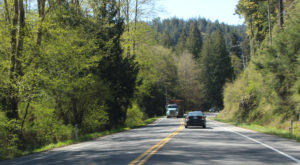
“Road markings need to not only survive, but shine on B.C.’s West Coast, especially at night and in rainy conditions,” said Claire Trevena, Minister of Transportation and Infrastructure. “The ministry’s top priority is making sure our roads and highways are as safe as possible.
By including larger, higher quality glass beads in our paint mix, it will be easier for people to see our lines when it’s dark and the weather is bad.”
Painting has begun, and this week work is taking place in the Pemberton area, Victoria and Duncan. In total, more than 3,000 km of roads and highways will be painted in the region this year.
Adding glass beads to line paint greatly increases reflectivity. The larger and higher-quality beads to be used in second coats this year in the region will provide 20% more reflectivity than the previous formula.
Also, requests for proposal were recently issued through BCBid for the next Pavement Marking Service Agreements, which will go into effect on December 16, 2018. The following changes are being made to improve on the current agreements:
* 20% more lines painted annually throughout the province
* Use of larger glass beads for increased reflectivity and visibility at night, and thicker paint for longer-lasting pavement marking in coastal areas
* Second coat application in areas that experience premature wear
* Enhanced contractor monitoring and auditing, to maintain consistent performance
There are five pavement marking service areas in the province: Vancouver Island, Lower Mainland, Thompson-Cariboo, Okanagan-Kootenay and Northern Region. Each of the upcoming pavement marking service agreements, which were last tendered in 2013, are for five-year terms, and include an optional two-year extension.
The ministry works closely with contractors to continually test new paint formulations, and products to ensure that high-performing, environmentally friendly formulations are used in BC.
Private contractors are responsible for repainting more than 20,000 km every year, on highways and provincially owned side roads in BC, using close to one million litres of paint and 500,000 kg of glass beads.
This work starts every spring, and continues through the summer and into the fall. www.tranbc.ca
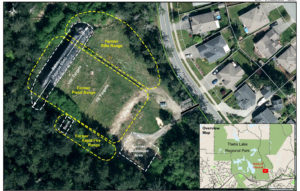
Friday, May 11 ~ VICTORIA. CRD Restores Former Pistol Range at Thetis Lake Regional Park to Naturalized Park
The Capital Regional District (CRD) has completed a project to remediate and restore the former pistol range at Thetis Lake Regional Park to naturalized park land.
“This former shooting range site was deemed contaminated under provincial legislation and required remediation due to metals from bullets and casings,” said CRD Parks Committee Chair David Screech. “The CRD has now addressed the contamination,” he said in a news release.
The contaminated site was remediated in 2014. Surface soils were excavated, and soil berms dismantled. Restoration work from 2016-2017 improved surface water drainage and soil conditions. Native grasses, shrubs and over 700 trees were planted. Invasive species plants that had spread from illegal disposal of garden waste were removed and continue to be monitored and controlled while trees get established.
For over 100 years, police forces, security companies and gun clubs used this area as a firing range. The site was transferred from the City of Victoria to the CRD in 1994 as part of Thetis Lake Regional Park. Pistol range activities ceased in 1999. The area contaminated by the activities of the pistol range was 0.75 hectares.
The total cost of the project was $736,000. It was funded through CRD project reserve funds and a $75,000 BC Brownfields Renewal grant.
For current photos of the site, as well as the remediation and restoration, visit www.crd.bc.ca/project/capital-projects/thetis-lake-remediation-project
 Thursday, May 10 ~ VANCOUVER ISLAND. Island Health Celebrates 4 Wins at UVic Nursing Awards. Island Health nurses go above and beyond every day as they provide excellent health and care to patients, clients and residents on Vancouver Island.
Thursday, May 10 ~ VANCOUVER ISLAND. Island Health Celebrates 4 Wins at UVic Nursing Awards. Island Health nurses go above and beyond every day as they provide excellent health and care to patients, clients and residents on Vancouver Island.
During Nursing Week (May 7 – 13), Island Health is celebrating nurses who also teach and are being recognized for their leadership in training nursing students. The 12th annual UVic Nursing Awards were held last night, May 9, and Island Health staff earned four awards.
Nurse Practitioner Preceptor of the Year Award – Lynn Guengerich, a nurse practitioner in pediatrics from the West Shore Health Unit, and Joanna Rippin, a nurse practitioner from the Victoria Health Unit who works mainly with immigrants and refugees, are the co-recipients of the Nurse Practitioner Preceptor of the Year Award. This award is given to nurse practitioners who have made a significant and substantial contribution to nurse practitioner student learning. Nurse Practitioner preceptors work with student nurse practitioners in a one-on-one setting, and allow the students to gain experience in their education.
Preceptor of the Year Award – Laura McDonald, a nurse at the Saanich Health Unit, was awarded the Preceptor of the Year Award. Laura has been a nurse since 2013. She was recognized as Preceptor of the Year for her excellence in guiding fourth year nursing students to reach the full scope of their training.
Collaborative Learning Unit Award of Excellence – Victoria General Hospital’s 6D north acute medicine unit, led by manager Trapper Edison, won the UVic School of Nursing’s Collaborative Learning Unit Award of Excellence. This award is given to units that exceed expectations in promoting student learning, serve as outstanding role models, foster the student nurse role among colleagues and demonstrate excellence in teaching.
Field Guide of the Year Award – Christina Berlanda, the manager of general surgery, women’s health, breast health and the vascular access team, won the Field Guide of the Year Award. When taking on student nurses, Berlanda is interested in giving them a fulsome experience that includes leadership training.
“On behalf of everyone at Island Health we are proud of our award-winners for their leadership in training nurses of tomorrow,” said Dawn Nedzelski, Island Health’s Chief Nursing Officer and Chief of Professional Practice. “They are outstanding role models and they continue to demonstrate excellence in teaching while delivering quality and exceptional care to our patients, clients and residents.”
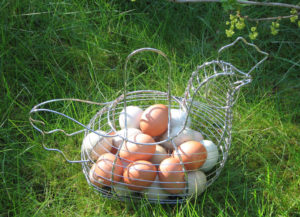 Thursday, May 10 ~ BC. Funding to the BC Association of Farmers’ Markets will increase by about $0.75 million to expand the BC Farmers Market Nutrition Coupon Program, it was announced on May 5. The total coupon amount will increase from $240 per participant household to $336 (as weekly coupons for four months).
Thursday, May 10 ~ BC. Funding to the BC Association of Farmers’ Markets will increase by about $0.75 million to expand the BC Farmers Market Nutrition Coupon Program, it was announced on May 5. The total coupon amount will increase from $240 per participant household to $336 (as weekly coupons for four months).
The number of participating households is expected to rise from 3,708 to over 3,900 and the number of expectant mothers in the program will be up by 450 by March 2020, it was stated in a Ministry of Health news release.
The coupon program runs June 11 to October 31 at participating farmers’ markets in 57 communities including these in the south Vancouver Island area: Duncan, Esquimalt, Sooke, and Victoria’s James Bay and Moss Street Markets.
The program provides nutrition and skills-building programs which are offered by community agencies associated with each participating market. Coupons help with the purchase of local food including vegetables, fruit, nuts, eggs, dairy, herbs, meat and fish. The program is part of the BC Government’s poverty reduction work.
Program benefits also include improved economic activity through an increased and sustained customer base for local and regional farmers, which in turn has allowed them to grow and diversify.
 Sunday, April 22 ~ GREATER VICTORIA. The Capital Regional District (CRD) has launched a new set of climate action activity kits in partnership with the Greater Victoria Public Library (GVPL). Climate Action To-Go Kits are available in all 12 branches of the GVPL as well as the Sooke, Sidney/North Saanich and Port Renfrew branches of the Vancouver Island Regional Library, the Salt Spring Island Public Library and the Camosun College Library.
Sunday, April 22 ~ GREATER VICTORIA. The Capital Regional District (CRD) has launched a new set of climate action activity kits in partnership with the Greater Victoria Public Library (GVPL). Climate Action To-Go Kits are available in all 12 branches of the GVPL as well as the Sooke, Sidney/North Saanich and Port Renfrew branches of the Vancouver Island Regional Library, the Salt Spring Island Public Library and the Camosun College Library.
Available to borrow from libraries across the region, these take-home kits contain a range of practical tools and activities that will help residents learn about and take action on climate change in their everyday lives.
“Our Climate Action To-Go program is a highly interactive way for residents to better understand how their household can reduce energy use and prepare for the realities of climate change in the future,” says CRD Director Judy Brownoff, chair of the region’s Environmental Services Committee. “Earth Day is the perfect time to re-launch these kits in our region, building on the past success of this program with a number of new tools focused on transportation and climate adaptation.”
Each updated Climate Action To-Go Kit gives residents the opportunity to:
• Measure their home’s optimal lighting using a digital illuminance light meter
• Measure their household’s appliance electricity use with a Kill-A-Watt meter
• Discover air leaks in walls and around windows using a thermal leak detector
• Tune up a bike or track steps while learning about local active transportation routes
• Test showerhead water efficiency
• Learn about expected climate changes while preparing for both adaptation and emergencies
“These kits provide the public with free tools and information to monitor—and ultimately adjust—the consumption of valuable resources,” says Maureen Sawa, CEO of the Greater Victoria Public Library. “They connect learning with action.”

The contractor and design team have been asked to identify how this error occurred. The pullouts are to be restored to meet accessibility standards for all transit users.
The necessary road widening for these pullouts has been completed at all three bus pullout locations — 1 pad on each side of the highway at West Shore Parkway, Laidlaw Road, and Harbourview Road.
The pullouts are for the purpose of allowing buses to move fully out of the way of traffic. It’s one measure that the BC Government feels will help reduce interruptions in vehicle traffic flow on Highway 14, as first announced by Premier John Horgan in Sooke on January 19. Horgan is MLA for Langford-Juan de Fuca.
Highway 14 (Sooke Road) is pretty much the one way in and out of the town of Sooke, population about 13,000. At least 70% of Sooke residents leave Sooke daily for employment and post-secondary in more central regions of Greater Victoria.
The BC Ministry of Transportation & Infrastructure (MOTI) says: “It was discovered that the elevation of the concrete pads for the bus shelters was a bit too high. The discrepancy in height is quite small (less than 10 cm), but there is still potential for the curb to be bumped by the bus bumpers when using the pullouts.”
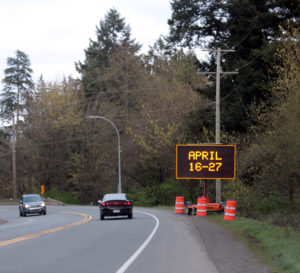
“The Ministry explored all possibilities for addressing the concern with the pads, and determined that the best option for getting the pullouts operational as quickly as possible is to remove and rebuild the concrete pads at a lower height,” it was confirmed today by MOTI.
“The bus pullouts are still expected to be completed and ready for use this spring as originally announced.”
Roadside marquee signage shows April 16 to 27 as the traffic-interruption dates during bus pullout reconstruction.
Those signs have been up for at least two weeks, so this problem only discovered after the six pullouts were completed.
“A number of groups were involved in design and construction, and the ministry continues to work with them to determine the cause of the issue and address the resulting cost increase,” says MOTI.
“Own or rent: caught in between”
Housing Analysis by West Shore Voice News
First published in our April 6, 2018 print/pdf/subscriber edition
=====================================
 With the continued price increases in the Greater Victoria housing market combined with stricter mortgage-borrowing requirements, a chunk of would-be buyers are deliberately prevented from becoming homeowners. In the financial world it’s referred to as ‘cooling the housing market’.
With the continued price increases in the Greater Victoria housing market combined with stricter mortgage-borrowing requirements, a chunk of would-be buyers are deliberately prevented from becoming homeowners. In the financial world it’s referred to as ‘cooling the housing market’.
That strategy ends up targeting those at the cusp of home ownership … first-time buyers, and the home sellers with lower-end properties that appeal to the entry-level buyers. Individuals and families in that sector are generally the ones who can least afford the costs associated with the risks and overhead costs of dealing with real estate transactions.
Costs include legal fees, Realtor commissions, property purchase tax, and extended dual costs while waiting for homes to sell — like higher rates for vacant home insurance and requiring the cash flow for temporary renting or couch-surfing in the meantime (which contributes to productivity loss and lifestyle stress).
The big chill served to hurt that vulnerable sector of would-be buyers and entry-level homesellers who literally live on the edge of the market — in or out of homeownership, which will it be?
 Last fall and in early 2018, as the list price of lower-end homes frequently dropped in order to find buyers who could qualify, those who tried to make the most of having owned a home may have suffered the most.
Last fall and in early 2018, as the list price of lower-end homes frequently dropped in order to find buyers who could qualify, those who tried to make the most of having owned a home may have suffered the most.
With qualification for mortgage financing becoming tougher, these previous homeowners often now end up as renters — and usually at the top end of the renter food chain where houses rent for as much as $2,500 per month in Greater Victoria or more. That may be the only portion of the rental market with a relatively higher vacancy rate, due to the price point.
Seeking input from resources like www.readytorentbc.org where their goal is to help with housing stability and successful tenancies, or dealing directly with a property management firm, are two ways to manouevre in the complex waters of housing decisions for those who will not ever, or cannot now, afford to buy.
FEATURE ADVERTISERS [West Shore & Sooke]:
>> George Holmes, Sutton Advantage Property Management – 250-216-4684
>> Clive & Kirsten Greenaway, Greenaway Realty – 778-352-4771
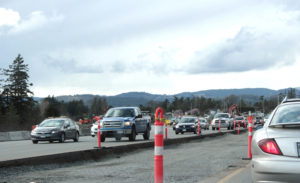
TRAFFIC ADVISORY – March 24 to 30 / extended through Easter Weekend to Wednesday April 4
Lane shifts returning to Highway 1 at Admirals/McKenzie
=========================================
Drivers are advised to watch for temporary shifts in the travelling lanes on Highway 1 as work continues on the McKenzie interchange, the BC Ministry of Transportation & Infrastructure advised today, March 23.
From Saturday, March 24, through Friday, March 30 while the water main system is connected and tested, traffic will run on the same temporary alignment that was put in place for a limited time in February.

These temporary alignments are designed for motorists to pass through safely at 50 km/h. Drivers are asked to keep moving through the construction site while following signs, watching for workers, and obeying the construction speed limit of 50 km/h.
Traffic advisories: www.drivebc.ca | Project website: http://engage.gov.bc.ca/mckenzieinterchange/
>> Photos of construction zone on Hwy 1 near McKenzie Interchange [West Shore Voice News – March 23, 2018]

Tuesday, March 20 ~ BC. There will be a test of the BC Emergency Alerting System at 1:55 pm PDT on March 21, 2018.
The test is being conducted by Emergency Management BC.
This is part of a Canada-wide Alert-Ready system that allows government officials to issue public safety alerts through major television and radio broadcasters. This system will only be used during large-scale disasters or emergencies where loss of life is imminent and possible.
Please note that text messages will NOT be tested at this time. Testing of wireless alerts will begin in May 2018.
You can currently expect to receive emergency alerts via Canadian radio and TV, cable and satellite operators.
Alert Ready is a Canada-wide program that allows government officials in each province and territory to issue emergency alerts.
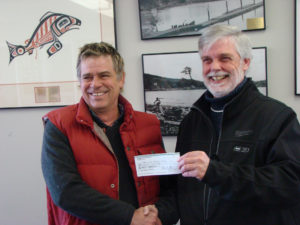
The fundraising goal of the Peninsula Streams Society is $205,000 to match the Dept of Fisheries and Oceans RFCPP funds for 2018-19. They are currently one-third of the way there. Some funding is confirmed, some has been requested, and some still needs to be found. Total project cost is about $450,000. Some of that has already been raised and spent in 2017-18 on design work.
“Bottom line, we are within sight of the goal to begin construction in the coming 2018-2019 fiscal year,” says Peninsula Streams Society president Ian Bruce. On March 14 a cheque for $7,500 was presented to Peninsula Streams by the Esquimalt Anglers Association whose volunteers also donate “a lot of hours” at Goldstream Hatchery.
“People understand that salmon enhancement is truly a regional issue. The Millstream Creek is not in Esquimalt but they recognize that projects of this kind support salmon fishery throughout the south Island.
 “Stepping up”, explains Ian Bruce, is a deliberate pun. The Peninsula Streams Society is working with the Goldstream Volunteer Salmonid Enhancement Society and others to build the fishway (a series of concrete steps) that will enable coho salmon and cutthroat trout to get further up the Millstream Creek.
“Stepping up”, explains Ian Bruce, is a deliberate pun. The Peninsula Streams Society is working with the Goldstream Volunteer Salmonid Enhancement Society and others to build the fishway (a series of concrete steps) that will enable coho salmon and cutthroat trout to get further up the Millstream Creek.
Currently, fish passage is blocked at Atkins Road by a large perched culvert that is too high up for the fish to jump into. The fishway will allow the fish to continue upstream, gaining access to an additional 8 km of habitat.
In total, Peninsula Streams Society is seeking 15 ‘step sponsors’—one per step—who will each contribute $7,500 towards the project costs, as well as smaller donations from groups and individuals. Esquimalt Anglers are the fifth group to contribute. Other step donors include Trotac Marine Ltd and Ralmax. Municipalities including the City of Langford, as well as Ecoasis at Bear Mountain, and the Pacific Salmon Foundation have also contributed to the project.
Wednesday, March 14 ~ COASTAL BC. BC Ferries will add extra sailings on their busiest routes for the Easter Long Weekend.
From March 29 to April 3, the additional sailings between Metro Vancouver and Vancouver Island — on the Tsawwassen-Swartz Bay route and the Horseshoe Bay/Departure Bay and Horseshoe Bay/Langdale routes.
The most popular travel times are expected to be mid-day Thursday March 29 to late morning Friday March 30, with traffic returning on the holiday Monday, April 2 in the afternoon.
Checking the bcferries.com website and making reservations are options for busy travellers.
Early morning and late evening sailings are available on select sailings during the Easter long weekend and Spring Break travel period. From March 15 to April 3, standard under-height vehicles with driver can travel from $39 on the four main routes.

Monday, March 5 ~ Cowichan-Malahat-Langford MP Alistair MacGregor will be welcoming Jagmeet Singh on Vancouver Island this week, sharing the floor with the national NDP Leader at a community meet-and-greet in Duncan on Wednesday, March 7.
Members of the community are welcome to come and have a conversation with the two politicians about federal government policy and priorities for Parliament.
The get-together will be held at the Ramada Duncan at 140 Trans Canada Highway, from 4:30 to 6 pm.
MacGregor is presently promoting the “Create Your Canada” contest that gives Grade 11 & 12 students in the riding the opportunity to engage in making Canada a better place by creating an idea for a Private Member’s Bill. The winning student(s) will have the opportunity to travel to Ottawa to watch MP MacGregor present their idea to the House of Commons for First Reading.
 “I am very excited to give students in my riding the opportunity to learn about the legislative process and participate in law-making firsthand,” stated MacGregor. “The young people of this country are our future, and I am thrilled to have this chance to encourage our youth to get involved in politics and think about how we can create a better Canada.”
“I am very excited to give students in my riding the opportunity to learn about the legislative process and participate in law-making firsthand,” stated MacGregor. “The young people of this country are our future, and I am thrilled to have this chance to encourage our youth to get involved in politics and think about how we can create a better Canada.”
The deadline for submissions to the “Create Your Canada” contest is April 30, 2018. Students may enter individually or in groups of two. More info: http://alistairmacgregor.ndp.ca/create-your-canada-contest
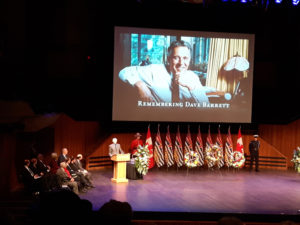
Nearly 1,000 people attended at the University of Victoria’s Farquhar Auditorium for the 10 am occasion.
By all accounts, this is a man who is now fully and joyfully remembered as both a ‘giant’ of the people and a ‘giantslayer’ of lesser glories. He was BC’s 26th Premier.
Former BC Dave Barrett during a short three-year term in office (1972-1975) is forever in the history books for preserving agricultural land in BC by creating the Agricultural Land Reserve, bringing in public automobile insurance so that all vehicle owners could be covered, and creating Pharmacare drug plan coverage for seniors. His government brought in Hansard and Question Period in the legislature, and abolished corporal punishment in schools. And making all that possible his nimble political fervor brought down a 40-year-run of the right-of-centre Socred government of the day.
Speakers delivering tributes included BC Lieutenant Governor Judith Guichon, Premier John Horgan, Retired Roman Catholic Bishop Remi J de Roo, Former BC Minister of Labour Bill King (former MLA Shuswap-Revelstoke), former BC Minister of Lands, Forests and Water Resources Bob Williams (former MLA Vancouver East), Former BC Cabinet Minister and MLA (Vancouver-Hastings) and now Chair of ICBC Joy McPhail, and Marc Elisen who was Barrett’s Deputy Minister and Planning Secretary.
Lt Gov Judith Guichon acknowledged Barrett as BC’s first NDP premier, calling him a champion of the underdog. “He is part of the very fabric of the province,” Guichon said, noting that 357 Bills were passed in the Legislature during his time in office.
BC Premier John Horgan addressed the crowd with this: “He captured the hearts of each and every one of you.” Remarking further on Barrett’s power of oratory, Horgan noted in particular Barrett’s “passion and power of the message of social justice”. Horgan declared that no one will ever forget Dave Barrett.
Barrett’s three grown children spoke about their father with memories, fondness, and emotion.
The on-stage emcee today for the 1-hour-20-minute occasion was BC Finance Minister and Deputy Premier Carole James. A powerful rendition of O Canada was led by a Grade 10 student from Esquimalt High School, Isolde Welby. On stage ahead of the formal portion was the Chroma String Quartet.
Visual presentations on the large screen were modest and brief. The entire event was light-hearted, with a good balance of remembering Dave Barrett for both his political contributions and his happy family life. His wife Shirley attended, and was clearly seen by everyone in her husband’s life as a steady, loving source of support.
In the audience was a wide range of VIPs and the general public, many of whom have been long-time NDP supporters. Mayors of many of Greater Victoria’s municipalities were there, as well as several MLAs.
Dave Barrett (October 2, 1930 to February 2, 2018) had Alzheimer’s leading up to his death at age 87.
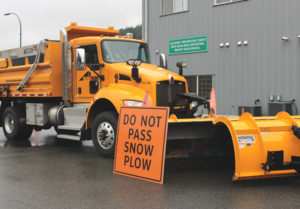
“Flurries will come and go tonight, tomorrow and tomorrow night,” says Rick Gill, manager, Mainroad South Island. Expect up to 5 cm of snowfall is expected across the area, with as much as 10 cm of snow on roads in certain areas especially higher elevations. The forecast indicates the weather front clearing by Sunday morning.
“This event may have negative impacts on driving conditions in some areas,” says Mainroad. Given that many drivers in this region are unfamiliar with winter driving conditions, all drivers are asked to slow down, drive carefully and use additional caution when driving near road maintenance crews.
Mainroad 24 Hour Emergency Hotline: 1-877-391-7310
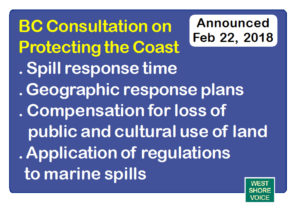 Thursday, February 22 ~ VICTORIA. Today Premier John Horgan outlined how the BC government will move forward on their action to protect the BC coast. It will start with consultation around four bitumen spill safeguards while at the same time referring to the courts the outstanding issue around BC’s right to protect BC’s coast, Premier John Horgan announced today.
Thursday, February 22 ~ VICTORIA. Today Premier John Horgan outlined how the BC government will move forward on their action to protect the BC coast. It will start with consultation around four bitumen spill safeguards while at the same time referring to the courts the outstanding issue around BC’s right to protect BC’s coast, Premier John Horgan announced today.
“We believe it is our right to take appropriate measures to protect our environment, economy and our coast from the drastic consequence of a diluted bitumen spill,” said Premier Horgan. “And we are prepared to confirm that right in the courts.”
“We’re proceeding with the four points that are not contentious. The fifth point we’re taking to legal counsel and will proceed in the days ahead,” Horgan announced to media this afternoon.
Consultations will begin soon on the “four remaining safeguards” as announced in January by Environment and Climate Change Minister George Heyman. Those are:
- Spill response time
- Geographic response plans
- Compensation for loss of public and cultural use of land
- Application of regulations to marine spills
Premier Horgan says his government will be retaining expert legal counsel to ready a reference to the courts, adding that it may take several weeks to bring the reference forward. This reference will seek to reinforce BC’s constitutional rights to defend against the risks of a bitumen spill.
 “I am absolutely hopeful that we can get back to a place where British Columbians and Albertans can share our common heritage which is our coast and our mountains and our streams,” Horgan told media today. “There are commonalities between our two provinces. And I would think all of us would want to get back to a place where we can enjoy the absolute privilege of being Canadians, and making sure that we all benefit from the distinctiveness of our individual provinces. That’s my objective, that’s been my objective from the beginning.”
“I am absolutely hopeful that we can get back to a place where British Columbians and Albertans can share our common heritage which is our coast and our mountains and our streams,” Horgan told media today. “There are commonalities between our two provinces. And I would think all of us would want to get back to a place where we can enjoy the absolute privilege of being Canadians, and making sure that we all benefit from the distinctiveness of our individual provinces. That’s my objective, that’s been my objective from the beginning.”
Horgan continued: “But I believe that the federal government and the government of Alberta do not understand the depth of feeling that the transport of diluted bitumen has on British Columbia. I’ve been quite clear about that. It’s not about Rachel Notley, it’s not about Justin Trudeau. It’s about the people of British Columbia and as the leader of the government I want to make sure I’m representing their interests.”
Horgan says the BC right to defend against the risks of a bitumen spill is a safeguard that has “generated disproportionate and unlawful reactions from the Alberta government, specifically their decision to ban the import of wines from British Columbia”.
“The actions by the Alberta government threaten an entire industry and the livelihoods of people who depend on it,” said Premier Horgan. “We have taken steps to protect our wine industry from the unwarranted trade action by the Government of Alberta.”
“It’s not about politics. It’s not about trade. It’s about British Columbians’ right to have their voices heard on this critical issue,” said Premier Horgan. “And it’s about BC’s right to defend itself against actions that may threaten our people, our province and our future.”
The premier said he intends for his government to continuing focussing on “things that matter to British Columbians”, itemizing from this week’s budget the focus on affordability, the housing crisis, and ensuring there are child care opportunities for families and a whole range of other issues. “That’s our preoccupation.”
“To have government of Alberta using these issues as tactics is not of any interest to me. I believe in the rule of law.
We’ve had one province and the federal government making suggestions that they know best, but we’re going to wait to hear from the courts,” Horgan said.
Wednesday evening, February 21 ~ West Shore & area. Yes, it’s snowing out there.
About 5 to 10 cm of snowfall in total is what’s in the forecast. Looks like the wet heavy snowflake type — started mid-afternoon and will continue through the evening.
While road crews do get out there to do sanding and application of salt to the roads, driving with extra care (and slower) is a reasonable thing to do. Not everyone in this region is experienced with winter driving, and likely the roads will be slippery and/or visibility can be restricted when snow is falling.
The weather forecast is for temperatures to reach about 4 degrees Celcius on Thursday, so a lot of that snow will melt. Forecasts indicate more snow on Friday.
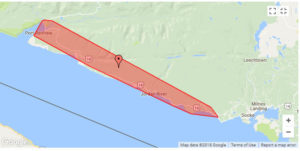
Sunday, February 18 ~ Vancouver Island. Strong winds and snowfall throughout the night have caused extensive damage and multiple outages to customers in the Lower Mainland, Sunshine Coast, Fraser Valley and Vancouver Island.
BC Hydro says their crews are working in all regions and restoration times will be provided once full damage assessments are complete.
There were strong winds overnight, continuing into this morning, along with moderate snowfall which is already melting mid-morning.
As of 10 am this Sunday morning, about 4,000 BC Hydro customers on South Vancouver Island are without power. There are 10 listed outages, showing almost 2,700 customers without power west of Admirals Road in an area that clusters Colwood, Esquimalt, Langford, Saanich and View Royal.
West of Sooke up to Port Renfrew, about 900 customers are without power (which is a significant number in a sparsely populated area).
There are clusters of outages on the Gulf Islands, as well as in North Saanich. A handful of customers are without power in Saanich.
Over 8,000 customers are without power on North Vancouver Island, with over 9,700 without power in the Lower Mainland/Sunshine Coast.
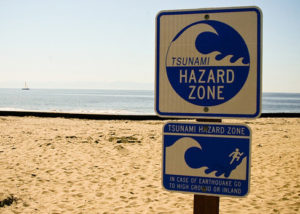 Thursday, February 15 ~ JUAN de FUCA. Siren testing has been scheduled for earthquake and tsunami early warning systems at Port Renfrew, Pacheedaht First Nation and Jordan River Regional Park between Thursday, February 15 and Sunday, February 18, 2018. People in the area can expect to hear loud intermittent warning sirens while testing is underway.
Thursday, February 15 ~ JUAN de FUCA. Siren testing has been scheduled for earthquake and tsunami early warning systems at Port Renfrew, Pacheedaht First Nation and Jordan River Regional Park between Thursday, February 15 and Sunday, February 18, 2018. People in the area can expect to hear loud intermittent warning sirens while testing is underway.
The systems are in the process of being set up and are not operational at this time. Testing is scheduled as follows:
- Jordan River Regional Park: Thursday, February 15, 2018 – Testing of the warning system will take place between 11am and 1pm.
- Port Renfrew and Pacheedaht First Nation: Thursday, February 15 – Saturday, February 17, 2018. The siren will sound intermittently between 9am and 5pm as system settings are adjusted, followed by a full test on Sunday, February 18 at 11:30am.
These tests are in advance of both systems becoming operational in 2018.
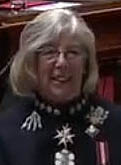
Tuesday, February 13. The BC Throne Speech this afternoon February 13 delivered in the BC Legislature laid out a preview of what can be expected in BC Budget 2018. Making life more affordable for British Columbians was the expected theme, seen strongly in directions for housing and child care.
“British Columbians have made their priorities clear. After years of rising living costs and stagnant wages, they expect government to make life more affordable,” said Lt Gov Judith Guichon in her introduction. “Too many British Columbians are working paycheque to paycheque. Many cannot pay the bills without going further into debt,” she said.
The Throne Speech is of course composed by the Premier and government of the day. The NDP directions for a social framework and economy that serves the broadest possible range of citizens was evident in the many initiatives that were introduced. Details will come in the Budget on February 20.
Today is was announced that more funds will be put toward training for early childhood education as a way toward increasing the number of licenced child care spaces. As Premier John Horgan explained afterward, this ultimately helps more women, as mothers, to get back into the work force to help boost family income and further their careers.
A creative approach to providing more lower-cost rental accommodation in larger cities is to build more accommodation for students on post-secondary campuses. This will free up a range of accommodations in housing in the general community for other low-income renters.
Further action on the effort to reduce the high cost of housing takes aim at speculation: “Government’s first step must be to address demand and stabilize BC’s out-of-control real estate and rental market. Safe, decent housing is a right that is under threat by speculators, domestic and foreign, who seek windfall profits at the expense of people who work, live and pay taxes in BC. We see the results of speculation in all parts of our province—distorted markets, sky-high prices and empty homes. Too many British Columbians are paying the price,” said Guichon in the Throne Speech.
Horgan spoke strongly in support of the forestry industry, saying that forestry is a 21st-century industry that can benefit from the application of advances in technology. There was absolutely no mention of LNG in the budget, which later BC Green Party Leader Andrew Weaver said was “refreshing” as LNG is “not profitable” in a world market that is glutted with natural gas (mentioning that the USA and Russia have ample supply of their own).

All references in today’s speech to fast-growing communities and transportation challenges were to the Lower Mainland, but oddly (as Langford-Juan de Fuca is the Premier’s own home riding) there was no mention about the west shore of Vancouver Island that is booming and in need of more housing, schools and transportation resolutions.
The BC NDP government says it is working toward a sustainable, diverse economy. “Your government’s vision for a fair and inclusive society will be built from the foundation of a healthy, growing economy, and from a clear understanding that we must create wealth in order to share it,” it was stated in the Throne Speech.
To media afterward, Premier Horgan reiterated his position about consulting with the people of BC as well as industry, communities and First Nations about the environmental protections that are needed to ensure protection of the environment in BC that is so entwined with the economy of this coastal province.
Horgan said he looks forward to “cooperative not coercive” actions between provinces. “All British Columbians want to see cooperative not coercive federalism. BC will continue to be cooperative equal partners in Canada,” said Horgan this afternoon.
Sunday, February 4, 2018 ~ There was a small earthquake at 10:57 pm on south Vancouver Island last night, Saturday February 3. First called a 2.7 quake by Natural Resources Canada Geological Survey of Canada, then upgraded to 2.8 Magnitude, there were no reports of damage, and none would be expected. The quake occurred at 19 km east of Sidney where it was lightly felt, as well as being felt throughout the Saanich Peninsula, Victoria, and Sooke.
Thursday, February 1 ~ VANCOUVER ISLAND. The Dogwood Initiative in the south Vancouver Island area is organizing a bus for early in the morning on Friday, February 2 to take their supporters to Nanaimo to attend the town hall meeting that Prime Minister Justin Trudeau will be holding at 11 am.

Tuesday, January 23 ~ WEST COAST / VANCOUVER ISLAND. An 8.1 Earthquake has occurred south of Alaska at 01:32am. As of 4:12 am the TSUNAMI WARNING WAS CANCELLED: https://www.emergencyinfobc.gov.bc.ca/tsunami-warning-coastal-areas-of-bc-jan-23-2018-at-0135am/
==== Previous post:A Tsunami Warning has been issued for all coastal areas of British Columbia. It is believed the waves generated may impact low lying areas under 20 metres.
Follow the instructions of authorities in your area. Do not call police or 911 for updates. Visit Emergency Preparedness and municipal websites as well as Twitter for updates.Minimize phone use in affected areas. For further information go to the emergency management British Columbia website at https://www.emergencyinfobc.gov.bc.ca/
No evacuations for Sooke are ordered at this time, says Sooke Fire Rescue. Fire crews are patrolling Whiffin Spit (CLOSED) and Billings Spit.District of Tofino has advised residents to evacuate to higher ground.
The tsunami is expected to arrive at Tofino at 4:40 am Pacific Time. See Twitter: @TofinoCA
Metchosin Fire Chief Stephanie Dunlop emailed out “this is not a drill”.
The National Tsunami Warning Center has issued a tsunami warning that includes the following zones of coastal British Columbia:• Zone A – the North Coast and Haida Gwaii.• Zone B – the Central Coast and Northwest Vancouver Island Coast, including Kitimat, Bella Coola and Port Hardy.• Zone C – the Outer West Coast of Vancouver Island from Cape Scott to Port Renfrew.• Zone D – the Juan de Fuca Strait from Jordan River to Greater Victoria, including the Saanich Peninsula.“
At this time it is believed that a tsunami has been generated. The tsunami may impact low lying coastal areas in these zones. Local governments in these zones are urged to activate their emergency plans and immediately begin evacuation of identified areas at risk for tsunami impacts,” said Chief Dunlop.
No other zones of coastal British Columbia are at risk.The Township of Esquimalt is monitoring the tsunami warning situation and are setting up a reception centre in case evacuation is necessary – details to follow.
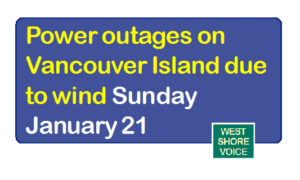 Sunday, January 21 ~ SOUTH VANCOUVER ISLAND. Extreme winds have caused extensive damage and multiple outages for BC Hydro customers in the Lower Mainland, Fraser Valley and Vancouver Island, says the utility on their website this morning.
Sunday, January 21 ~ SOUTH VANCOUVER ISLAND. Extreme winds have caused extensive damage and multiple outages for BC Hydro customers in the Lower Mainland, Fraser Valley and Vancouver Island, says the utility on their website this morning.
At present, about 65,000 customers throughout the south coast and island areas are without power. at 9 am, BC Hydro said that it expects outages to increase until the winds decrease.
“Restoration efforts are being coordinated in all regions and restoration times will be provided once full damage assessments are complete.”
On Vancouver Island, as of 9 am this morning:
> Vancouver Island South – 22 outages: 14,951 customers without power
> Vancouver Island North – 32 outages: 11,990 customers without power
Hard hit with the most customers out of power are the Gulf Islands including Galiano, Mayne, Ganges, Pender and Saturna.
In Langford/View Royal 764 customers are without power in the Atkins/Millwoods/Strandlund area. As of 9am there are no outages in the Sooke region.
Other areas on the current list of outages: Central Saanich, North Saanich, Sidney, Victoria (Fairfield/James Bay 702 customers without power) and Oak Bay/Saanich (2,072 customers without power).
To report an outage, call 1 800 BCHYDRO (1 800 224 9376) or *HYDRO (*49376) on your mobile or report it online at www.bchydro.com
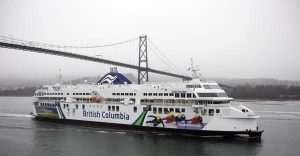 Thursday, January 18 ~ COASTAL BC. BC Ferries vessels and terminals will become a smoke-free environment starting January 22, 2018. This policy change was first announced last summer.
Thursday, January 18 ~ COASTAL BC. BC Ferries vessels and terminals will become a smoke-free environment starting January 22, 2018. This policy change was first announced last summer.
The coastal transportation provider says it is introducing a smoke-free environment to support the health and wellness of customers and employees.
The new policy applies to the smoking of tobacco and any other substance, including the use of e-cigarettes. All vessels and terminal properties will become smoke and vape-free environments, including the interior of all vehicles that are on BC Ferries property.
BC Ferries says it has received many requests from customers to offer a smoke-free environment.

Wednesday, January 10 ~ GREATER VICTORIA. The outlying area of Juan de Fuca west of Sooke may yet get their piped water through the Capital Regional District (CRD).
The CRD Board today January 10 approved a revised draft Regional Growth Strategy (RGS). Approval of the revised draft follows a successful mediation process with the BC Government (from February 2017 until January 5, 2018), to resolve disputed provisions related to managing growth, water servicing, climate action, food systems and transportation.
CRD Board Chair Steve Price (Mayor of Sidney) was in favour of referring the RGS document to municipal councils for acceptance. “The revisions seek to address the interests of all the parties, and set the stage for how the region will approach future growth,” said Price.
Adoption of the RGS bylaw requires all municipalities within the capital region to approve the growth strategy. Mediation was triggered in February 2017 when seven municipalities (Saanich, Central Saanich, North Saanich, View Royal, Highlands, Colwood and Esquimalt) refused to accept the RGS. Provincial legislation provides specific dispute resolution mechanisms to settle an RGS that does not receive unanimous municipal acceptance.
“The mediation process was a very positive experience” says Juan de Fuca Electoral Area Director Mike Hicks. “I hope that all councils will support the mediation compromise that came out of the process so we can put this dispute behind us.” He further explained that OCPs in Juan de Fuca must be consistent with the RGS, and that once the RGS is finally approved that OCP documents in the JdFEA can finally be brought up to date.
Director Hicks said there is a backlog of work and that Juan de Fuca constituents need zoning for development. Ahead of today’s vote at the CRD board table, Hicks appealed to fellow directors to endorse the mediated RGS “to give some neighbouring residents in the Juan de Fuca to connect to CRD water, and give all JDF residents the opportunity to pass their OCPs and be an equal partner in the CRD region”.
The solutions generated by mediation focus on seven topic areas: vision / population projections, economic development, climate action, transportation, food systems, growth management and water servicing. Solutions included revised policy provisions, updated mapping and population projections, updated content related to food systems and climate action, and terminology edits.
The next step in the process is a 60-day referral of the document to municipal councils for acceptance. If all councils accept the revised document, the Board may adopt the RGS as bylaw.
The RGS bylaw will update the existing growth strategy, adopted back in 2003. The RGS guides decisions on regional issues, provides population and employment projections to the year 2038 and updates policy regarding water servicing, growth management, the environment and infrastructure, housing and community, transportation and economic development.
Director Alice Finall (Mayor of North Saanich) at today’s CRD board meeting noted that 2016 census figures were not yet included in the RGS but that waiting for that amendment would delay the RGS approval process. As Director Barb Desjardins (Mayor of Esquimalt, and former CRD Chair) pointed out, that detail can be brought up to speed after the RGS might be passed.
The 2018 RGS also provides new policy regarding food systems and climate action. Visit www.crd.bc.ca/sustainability for more information.
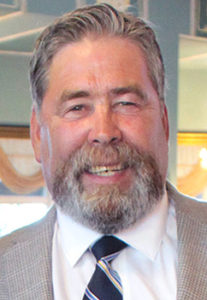
Until the mediation that concluded Jan 5, seven of the 13 municipalities within the CRD (Saanich, Central Saanich, North Saanich, View Royal, Highlands, Colwood and Esquimalt) had rejected the idea of piped-water extension by rejecting the overall Regional Growth Strategy (RGS).
Over the past year or two, Hicks had the continued support of Langford as well as the neighbouring Sooke municipality. Hicks’ pitch to Premier John Horgan (MLA for Langford-JdF) helped move things along, with Municipal Affairs Minister Selina Robinson then extending the mediation deadline from Nov 30/17 to January 15.
CRD Directors will vote on the mediated solution at their board meeting on Wednesday January 10. If approved by the CRD Board, the RGS goes back to municipal councils for final approval.
The RGS is used as an overall guiding tool for regional development including transportation, land use, water, waste management, environmental services, arts and recreation, hospitals, planning strategies, and protective services.
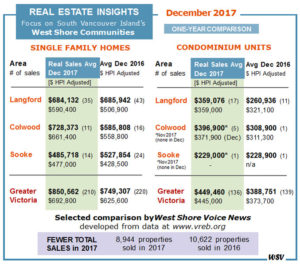 Tuesday, January 2 ~ GREATER VICTORIA. Overall in Greater Victoria the continuing demand for housing in this region retained strong interest in 2017 with those who can afford to own a home. In figures released by the Greater Victoria Real Estate Board today, 2017 saw fewer property sales (8,944 this year compared to 10,622 last year), but prices were higher at this year-end than in December 2016.
Tuesday, January 2 ~ GREATER VICTORIA. Overall in Greater Victoria the continuing demand for housing in this region retained strong interest in 2017 with those who can afford to own a home. In figures released by the Greater Victoria Real Estate Board today, 2017 saw fewer property sales (8,944 this year compared to 10,622 last year), but prices were higher at this year-end than in December 2016.
In Greater Victoria the overall actual average sale price of a single-family home went up about $50,000 in one year (Dec 2016 to Dec 2017). The HPI (data-adjusted figure based on selected criteria like transportation and proximity to schools and services) went up more than that — an increase of $67,200 between December 2016 and December 2017 which implies an upward trend perhaps for 2018 as well.
WEST SHORE FOCUS: Comparing the 2017 year-end to one year ago, actual house sale average prices were virtually unchanged in Langford ($684,132 this year compared to $685,942 in December last year) although the HPI (data-adjusted prices) jumped $84,000 during 2017.
Colwood prices skyrocketed, with an actual sales average increase of $142,565 in that same one-year period (house sales in December 2017 averaged $728,373 in Colwood compared to $585,808 in December last year).
In Sooke, the overall sale price of homes in one year dropped about $42,000 (from $527,854 in December last year to $485,718 in December this year) though both are still around half a million dollars to live in a fairly remote semi-rural area.
The availability of different types of housing probably contributes to the differences. Langford is consistently building a range of housing types including single-family, townhomes and some condos (as well as rental apartments and affordable housing buildings) while Colwood is seeing a lot of new construction in the higher end of single family homes. In Sooke it’s possible much of the best stock already sold in the very active year that was 2016.
BROADER ISSUES: The new Canada Mortgage and Housing Corporation (CMHC) mortgage rules (as of January 1, 2018) that include a ‘stress test’ to determine if a homeowner’s income can withstand interest rate increases, caused a bit of a pre-2018 rush in housing sales in November 2017 in particular. While the government says it hopes to see the housing market cool a bit (and they say they want to protect buyers from over-reaching their ability), the dream of homeownership is increasingly unavailable to many people in Canada — especially in the inflated Victoria/Vancouver markets.
The underlying problem is a precarious job market in which fewer stable long-term jobs are available compared to in decades past. And underlying that scenario is a financial system that has for about 30 years favoured the winners to keep on winning, pushing affordability in all respects further out of the reach of average workers and much of the middle class.
In Canada overall, the crash of 2008 was followed by about nine years of stagnant economic growth. That was compounded in BC by a government whose policies to privatize, use crown corporations as cash-cows, and save at all costs for a rainy day left little fresh energy or opportunity in the economic system for small business and workers alike.
After the second world war, Canada started CMHC and created the housing market as a vehicle for personal and family investment as well as government tax revenue. Now very much an investment tool for those who can afford it, the housing financial system in Canada has completely lost sight of the main purpose of real estate which is to put a roof over people’s heads.
Pushing previous low-end homeowners back into the rental market (and keeping more people renting because they can’t afford to enter the market) is an additional ‘unintended consequence’ of rising house prices. This makes rental availability virtually nil for that new group of renters as well as those who have always rented (which includes most of the Millennials).
All of this is a crisis waiting to burst. It has yet to be seen whether actions by the federal and BC government (with options like affordable housing, as well as the ‘cooling’ of the homebuyer market) will be able to moderate the looming crisis of ‘where are people going to live’? And if people can’t afford to buy high-end or even ‘regular’ homes, the construction industry will have to shift fairly rapidly to building other types of housing to maintain their profitability.
ARCHIVE
- Vancouver Island breaking news archive [Jan to March 2018]
- Vancouver Island breaking news archive [March to December 2017]
- Vancouver Island breaking news archive [Jan to Feb 2017]
- Vancouver Island breaking news archive [Oct to Dec 2017]


